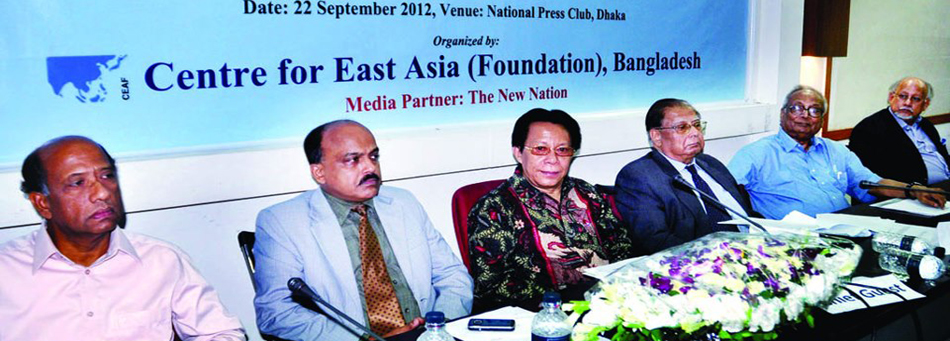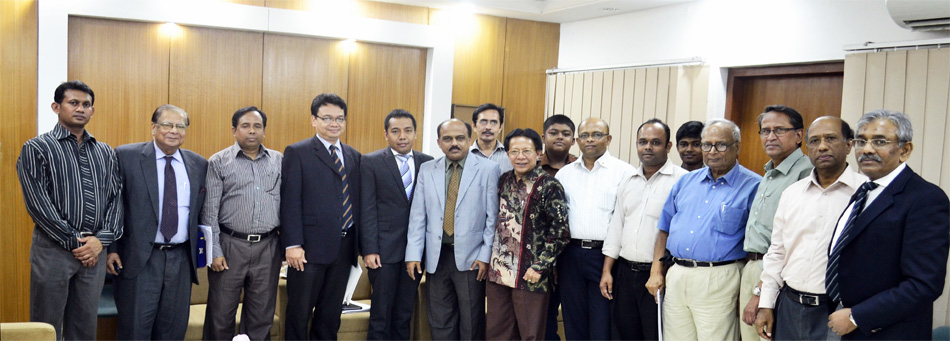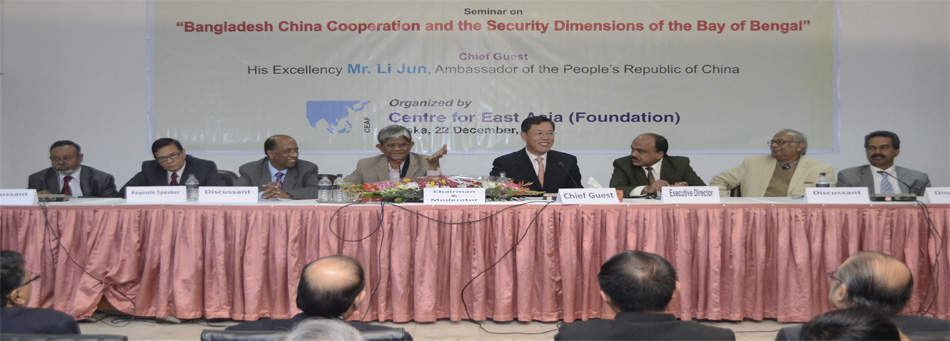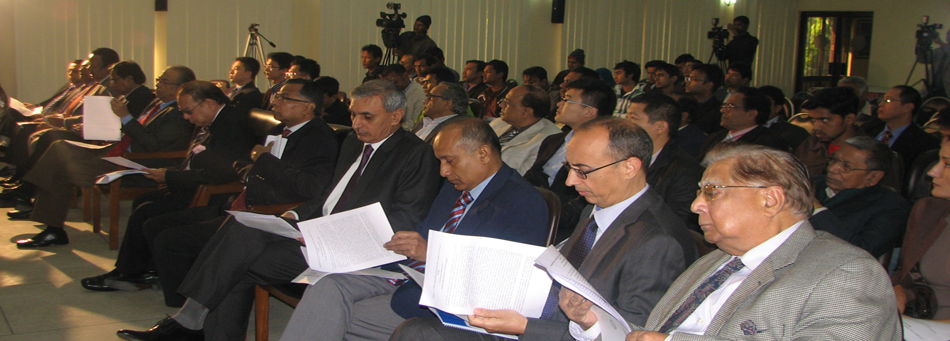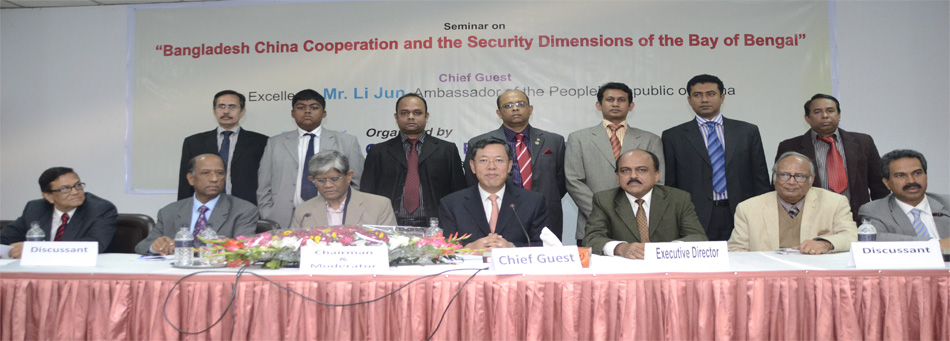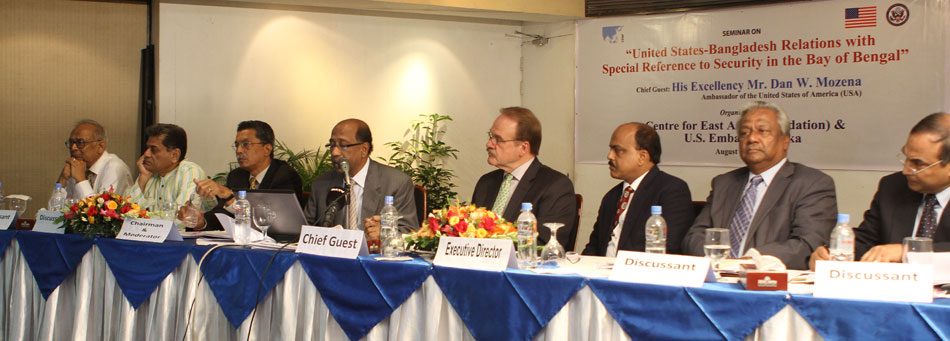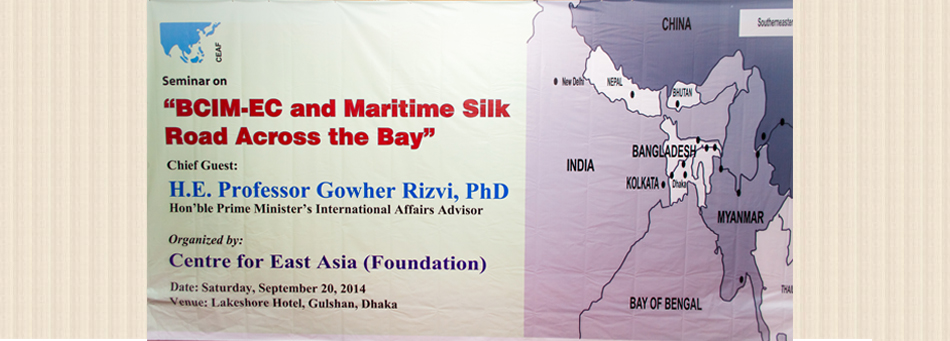Keynotes:
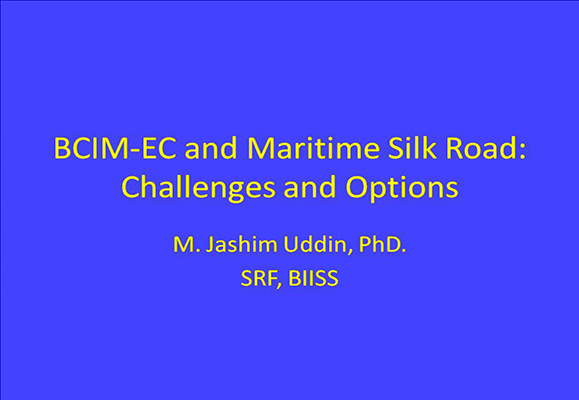
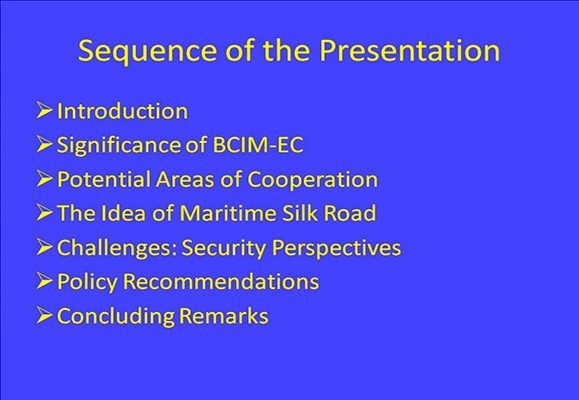
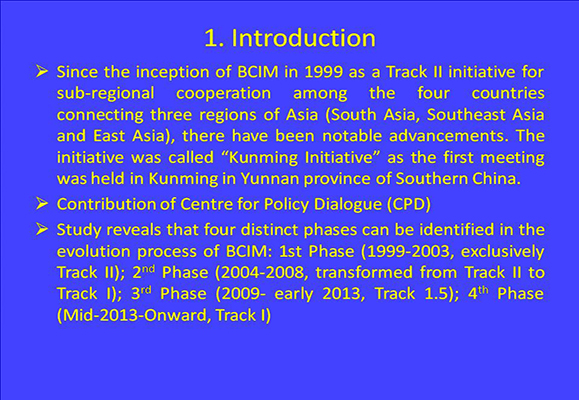
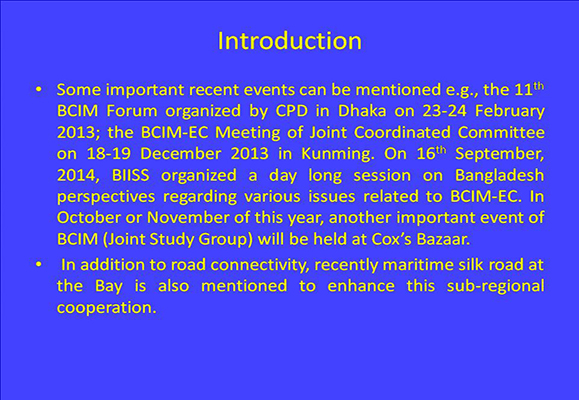

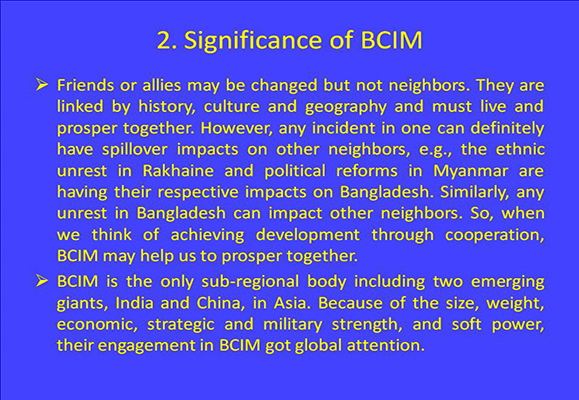
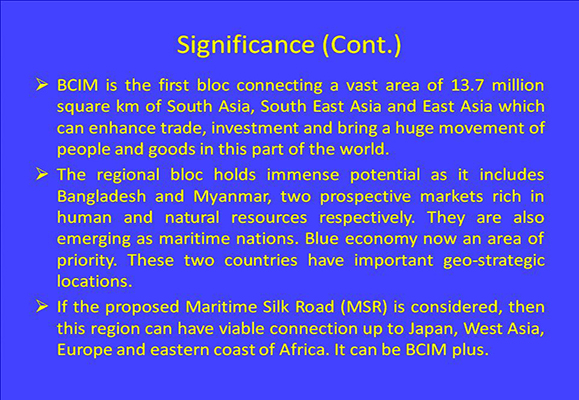
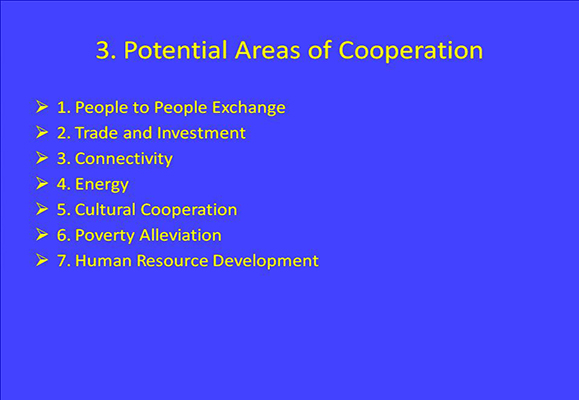
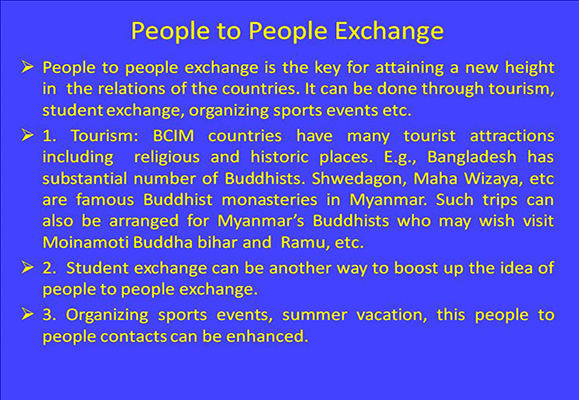
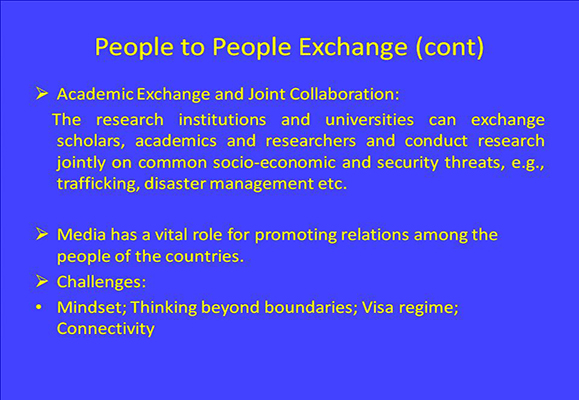
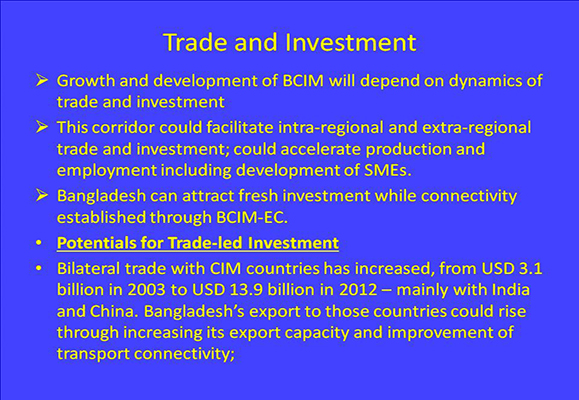
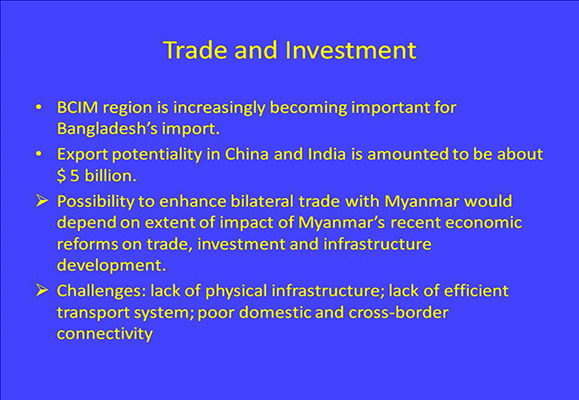
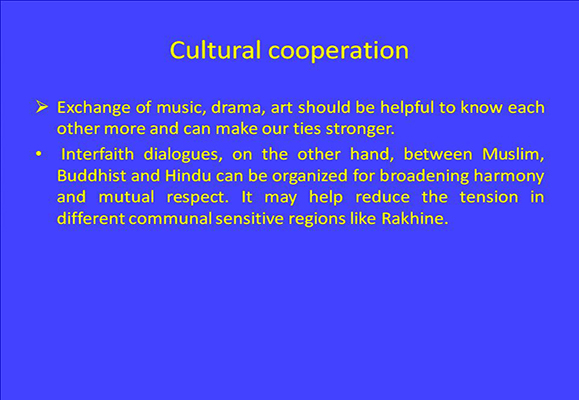
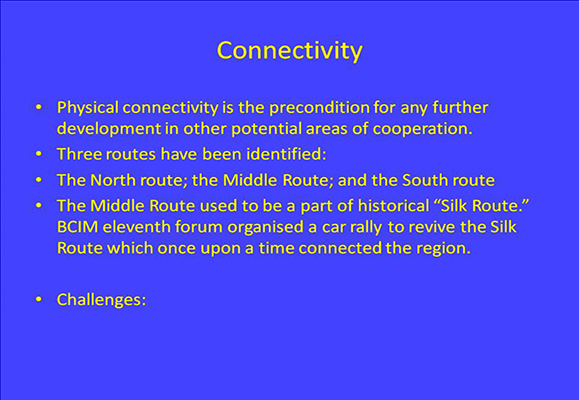
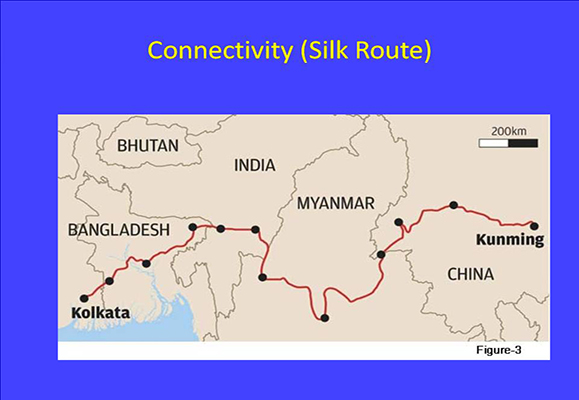
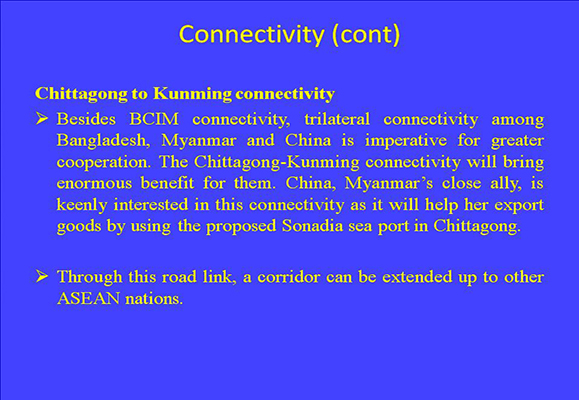

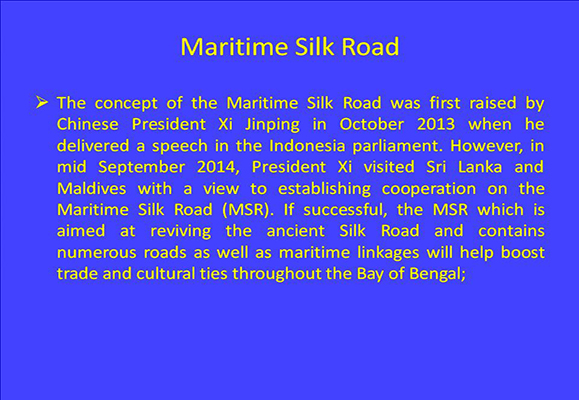
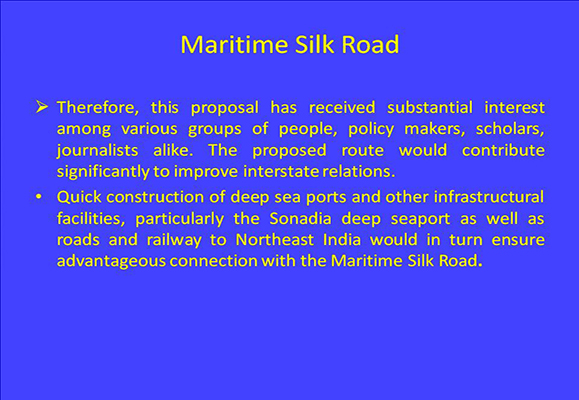
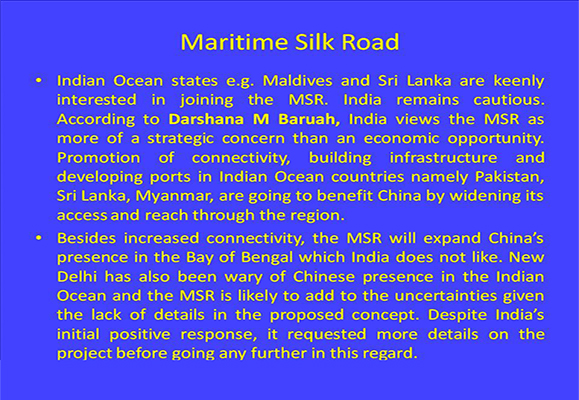
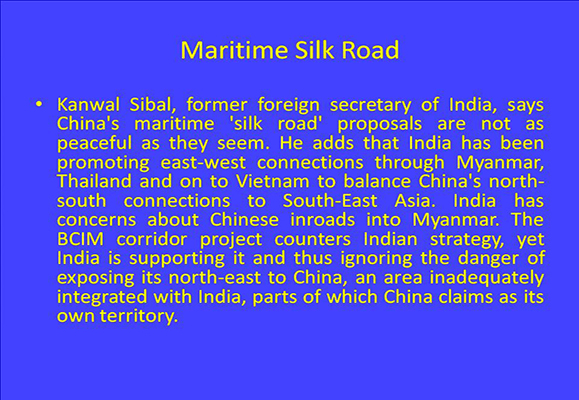
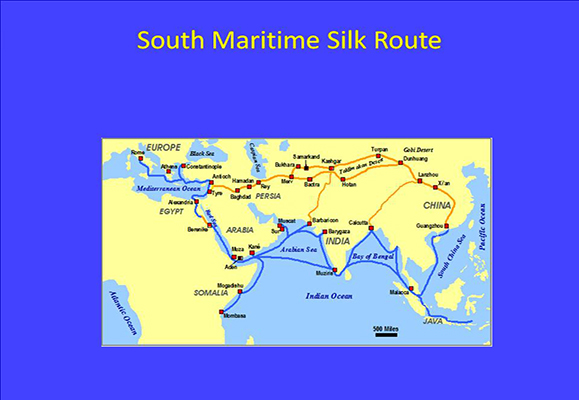
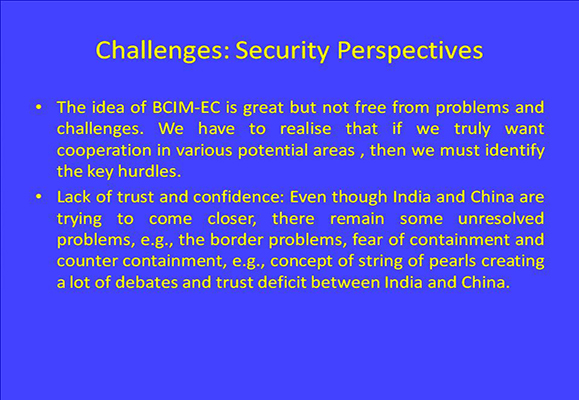
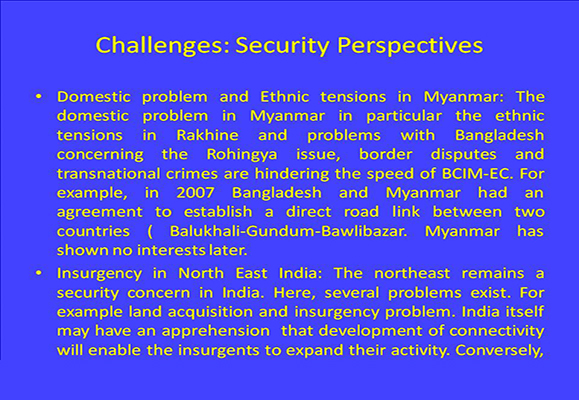
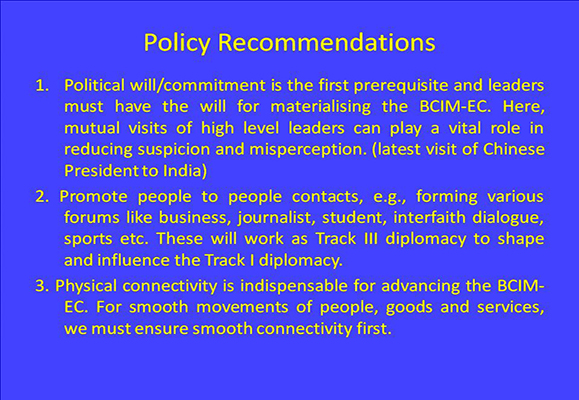
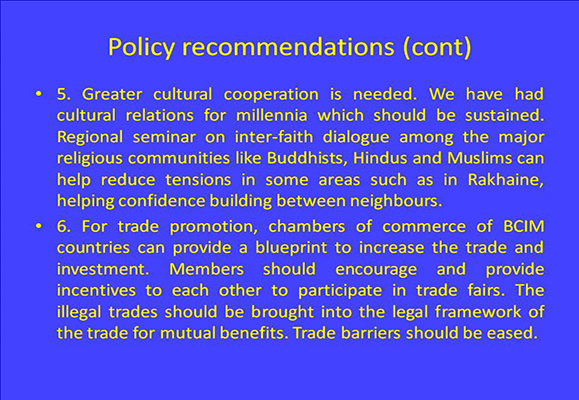
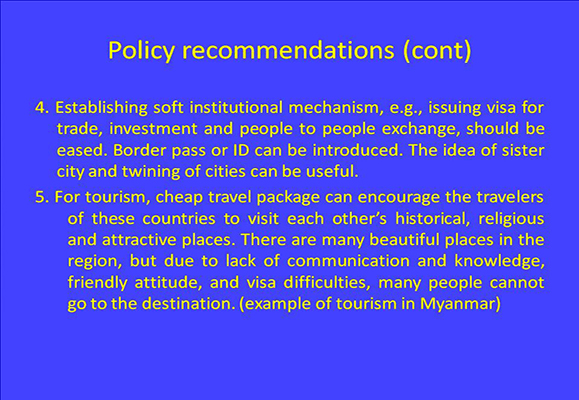
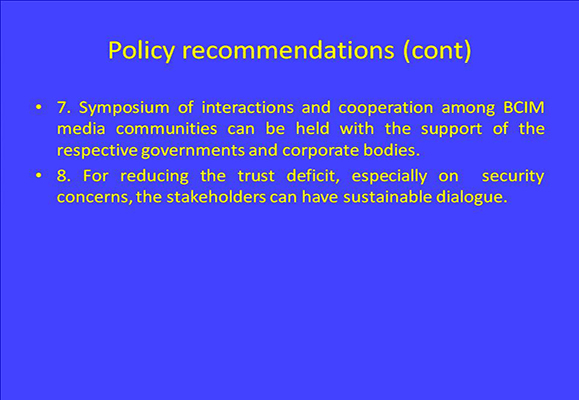
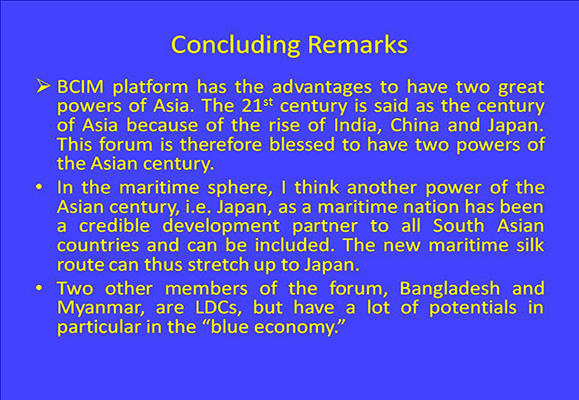
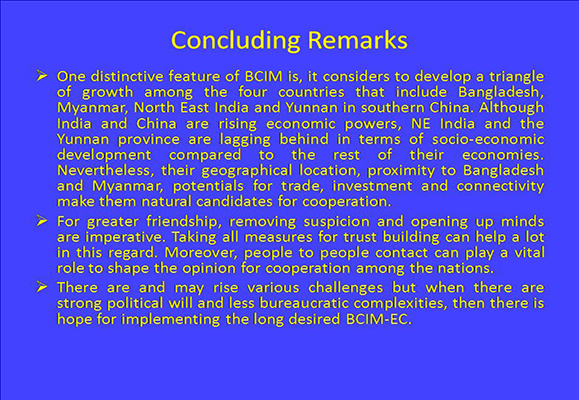
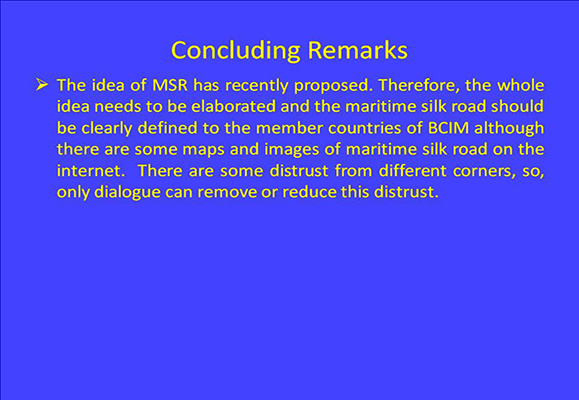

Geo-Strategic significance of East Asia and Bangladesh-Indonesia Relations
Prof. Ataur Rahman, M.A., Ph.D. (Chicago)
Introduction:
strategic significance
Twenty First Century is often called the “Asian Century” as East and Southeast Asia emerged as the most dynamic region of the world. In fact, two of the largest economies – China and Japan together with South Korea and Indonesia transformed the region as the engine of global recovery and growth. The rise of India in the past decade gave further impetus encouraging the notions of formal and informal regional integration of Asia and the Pacific. It is also remarkable to witness how Indonesia could improve its standing in the region with consistent growth, poverty reduction, democratization, and creating a secure environment for foreign investment. Indeed, a positive interplay of regional and global security dynamics in this “core world region” created an enabling environment where most states can gain economically, financially and strategically. Trade and travel are freer in the region with greater intra and inter-regional cooperation.
The positive engagement of the United States in protecting commerce in the region for long served as a counter-balance to domination by a single regional or global power. China’s role in the region has also been constructive in the past three decades to support economic and social development without imposing ideology. Asian economies, once only a player within the region, have assumed a broader global responsibility. China has become a creditor nation. The very fact that the G-20 Summit itself has emerged as a key international forum indicates that countries like China, Japan, South Korea, Indonesia and India have become increasingly indispensable to global decision-making. President Obama’s current focus on Asia-Pacific countries reinforces the growing strategic importance of the region that ties U.S. economic woes.
Context of Indonesia-Bangladesh Relations:
Bangladesh- Indonesia relations as explored in this paper is defined by an abiding context comprising history, culture, strategic and economic forces. Cultural and spiritual bonds between the two countries date back to ancient times as peaceful and fascinating interactions between the peoples of Eastern India and Indo-China region took place Travel and immigration played an important role in facilitating the absorption and diffusion of cultural practices, language and literature, music, art, food and architecture. Hinduism in the ancient times, Budhism in the medieval period, and Islam from twelfth century onwards played powerful acculturation role through peaceful manner without military missions. In fact, the form of Islam as prevalent in Indonesia and Bangladesh is influenced by a tolerant ethos, and survived the onslaught of colonialism, travails of independence, insurgencies/ extremism and fragmentation of societies and political divides.
Strategic and political context:
Bangladesh’s relations with Indonesia in strategic term became significant because of its location in the Bay of Bengal, and growing importance of the seas for security and development of the two countries. These relations got a boost from the rise of Indonesia as a regional pivot in Southeast/ East Asia. In terms of size, population, resource endowment, cultural diversity and above all location, Indonesia has an edge over middle powers like Egypt, Turkey, Saudi Arabia, South Africa, Brazil, Canada and Australia. Indonesia guards the sea-route between the Pacific and the Indian Ocean. Bangladesh, on the other hand, has a coastline of almost 710 K.M. and almost 90 percent of its energy requirements (fuel) travel by sea. Bangladesh’s two SLOCs connected with two sea ports - Chittagong and Mongla provide access to the ocean and act as vital trade links. Bangladesh has immense potential for exploring petroleum and natural gas from her sea areas. It is in this context, Indonesia’s strategic location is helpful for Bangladesh in its quest for security both in traditional and non-traditional spheres. In security Bangladesh’s relations with Indonesia in strategic terms began to develop from the crisis point in 1965 when in the Cold War era, Pakistan was treated as a vital neighbor sharing sea boundary in the Bay of Bengal. India’s relations with Indonesia did not develop during that period. Indonesia under President Sukarno took Pakistan’s side during 1965 War, labeled India as an aggressor, and helped the then East Pakistan’s naval forces in the Bay of Bengal. The post Cold War phase introduced a different kind of strategic rivalry among China, Japan, India and Indonesia. Today, the Bay of Bengal has become as a center of attention for regional as well as extra regional powers because of substantial discovery of natural gas off the Indian and Myanmar coasts. China and the United States are trying to influence in the maritime scenario- exercising control over security and resources. Bangladesh needs to build a common vision of maritime security, control, unhindered passage of trade, counter terrorism and piracy, disaster prevention and humanitarian relief in a balanced and inclusive manner towards safeguarding regional commons. In this respect, Indonesia could be a valuable partner in Bangladesh’s efforts to evolve an effective strategy to safeguard regional commons and national interests.
Indeed, Bangladesh shares a spectrum of common security issues, ranging from water- food, energy, disaster management, sea and economic security. Crises may emerge in distinct areas in the sea, but can quickly ripple out and resonate across the oceans. It is from such perspective the Armed Forces of Bangladesh welcomed Indonesia’s cooperation in our security efforts through various exchanges and cooperation, like Sesko education and military training between the Bangladesh Institute of Peace Support Operation Training (BIPSOT) and Education and Training Center for Peace Keeping (peacekeeping force) of the United Nations in Indonesia. The Ambassador of Indonesia to the People's Republic of Bangladesh His Excellency Zet Mirzal Zainuddin played an important role in this process of cooperation. But we need to forge a closer and deeper cooperation – to reach out to our brotherly country and oceanic neighbor which is economically more resurgent and politically stable and democratic.
Economic Context :
The most powerful dynamic of Bangladesh – Indonesia relations over the past four decades has come from economic needs and interdependence. Indonesia very appropriately looks at Bangladesh as a trading nation and a “bridge between South and Southeast Asia”. Bangladesh has become a natural trade partner- proximate and enjoying economic complementarities. Indonesia’s phenomenal rise as an economic power is indicated by its huge economy (over $1.04 trillion), world’s largest producer of palm oil, second largest producer of tin, third largest producer of rubber and coco, fourth largest producer of coffee and fifth largest producer of copper, nickel, timber, fisheries, and rare earth. Indonesia also showed remarkable rate of growth (7.1%) consistently from 1985 until the financial crisis from 1996. But Indonesia’s recovery program brought positive result and was reflected in continued high growth from 2005. In fact, Indonesia is going to be the 10th largest economy in the world by 2015.
Bangladesh’s trade relations with Indonesia began to grow significantly in the past five years. The current bilateral trade between Indonesia and Bangladesh has been on increase at a high rate. The volume of trade was 900 million U.S. dollars in 2009, reached more than 1 billion in 2010 and 1.4 billion in 2011. Indonesia in this respect enjoys a huge trade surplus with Bangladesh. Indonesia imports around 20 different commodities from Bangladesh - most important of them are pharmaceutical products, jute, and garments. It is heartening to note that the current Ambassador H.E. Zainuddin plays a monumental role in expanding the bilateral cooperation between the two countries and encouraging more exports from Bangladesh. A series of Expo/ exhibitions were arranged to encourage businessmen of the two countries for increase trade and investment relations. There is indeed a huge potential for trade expansion and investment opportunities. In this context, it may be pointed out that India’s trade with Indonesia grew from 4 billion U.S. dollars in 2005 to 14 billion U.S. dollars in 2010 and U.S. $ 20 billion by 2015.
Future Engagement: special relationships
Bangladesh’s expanding trade links and Look Its Policy provide the necessary point of convergence, and should act as the driving force in its relationships with Indonesia. Both the countries are poised to take the current level of cooperation to greater height at the economic, political and strategic levels. Enormous possibilities of cooperation exist in energy, food processing, construction, climate mitigation and disaster. Indonesia’s emergence as a regional power in Southeast Asia and Bangladesh’s ambition to play an enhanced role in the regional arena for security, energy development and economic cooperation should make it a natural and strategic partner of Indonesia. Today, Indonesia is a stable and vibrant democracy, a bastion of moderate Islam committed to multilateralism and maritime security, and counter-terrorism. Indonesia’s growing ties with the United States signified by Comprehensive Partnership Agreement while recognizing China’s fair and transparent role in East Asian region could act as a model policy for Bangladesh to following in the coming years. Despite delays and inaction, perhaps the changed regional and global situation has now opened up avenues for “special relationships” or “partnership agreement” between Bangladesh and Indonesia –extending our horizon beyond South Asia, and institutionalizing our multilateral cooperation in South-east and East Asian region.
Date:22-09-2012
Venue: National Press Club
Dhaka.
Sobering influence of Indonesia in Cloudy
South East Asian Theatre
Sayed Kamaluddin
Editor, Weekly HoliDay
Post colonial Indonesia, at the advent of Cold War, distinguished itself as one of the founders on Non-Aligned Movement. Its foreign policy pendulum became somewhat irregular as it militarily tackled communist insurgency and domestically sought to curb economic dominance of the native Chinese Community. As Wikipedia observes in a brief on Indonesia’s foreign relations: “During the regime of president Suharto, Indonesia built strong relations with the United States and had difficult relations with the People's Republic of China owing to Indonesia's anti-communist policies and domestic tensions with the Chinese community. It received international denunciation for its annexation of East Timor in 1978. Indonesia is a founding member of the Association of South East Asian Nations, and thereby a member of both ASEAN+3 and the East Asia Summit. Since the 1980s, Indonesia has worked to develop close political and economic ties between South East Asian nations, and is also influential in the Organisation of Islamic Cooperation. Indonesia was heavily criticized (by the West) between 1975 and 1999 for allegedly suppressing human rights in East Timor, and for supporting violence against the East Timorese following the latter's secession and independence in 1999. Since 2001, the government of Indonesia has co-operated with the U.S. in cracking down on Islamic fundamentalism and terrorist groups.”
With the East Timur issue settled, Indonesia in the Post-Cold War Asia-Pacific theater, is re-emerging as a stabilising force and a sobering influence. Although US President Barack Obama’s Indonesia trip in November, 2010 was cut short by approaching ash cloud from an eruption of Mount Merapi volcano, he did deliver his planned speech to the Muslim world in Jakarta and tour the Istiqlal Mosque, the largest in South Asia, before flying out.
Obama’s speech touched on Indonesia’s place as the largest Muslim-majority country in the world and how the country, “like India, serves as an example to some of its neighbors of the capacity of a developing country to emerge while being a democracy.”
In November 2011, US Secretary of State Hillary Clinton wrote about “America’s Pacific Century” in the America issue of the Foreign Policy magazine. She observed: “The Asia-Pacific has become a key driver of global politics. Stretching from the Indian subcontinent to the western shores of the Americas, the region spans two oceans -- the Pacific and the Indian -- that are increasingly linked by shipping and strategy. It boasts almost half the world's population. It includes many of the key engines of the global economy, as well as the largest emitters of greenhouse gases. It is home to several of our key allies and important emerging powers like China, India, and Indonesia.
“The United States and China need to work together to ensure strong, sustained, and balanced future global growth. In the aftermath of the global financial crisis, the United States and China worked effectively through the G-20 to help pull the global economy back from the brink. We have to build on that cooperation.
“A thriving America is good for China and a thriving China is good for America. We both have much more to gain from cooperation than from conflict. ..... “Over the last two-and-a-half years, one of my top priorities has been to identify and expand areas of common interest, to work with China to build mutual trust, and to encourage China's active efforts in global problem-solving. This is why Treasury Secretary Timothy Geithner and I launched the Strategic and Economic Dialogue, the most intensive and expansive talks ever between our governments, bringing together dozens of agencies from both sides to discuss our most pressing bilateral issues, from security to energy to human rights.
“As we build trust together, we are committed to working with China to address critical regional and global security issues. This is why I have met so frequently -- often in informal settings -- with my Chinese counterparts, State Councilor Dai Bingguo and Foreign Minister Yang Jiechi, for candid discussions about important challenges like North Korea, Afghanistan, Pakistan, Iran, and developments in the South China Sea.
“Among key emerging powers with which we will work closely are India and Indonesia, two of the most dynamic and significant democratic powers of Asia, and both countries with which the Obama administration has pursued broader, deeper, and more purposeful relationships. The stretch of sea from the Indian Ocean through the Strait of Malacca to the Pacific contains the world's most vibrant trade and energy routes. Together, India and Indonesia already account for almost a quarter of the world's population. They are key drivers of the global economy, important partners for the United States, and increasingly central contributors to peace and security in the region.”
Indonesia’s own perception of its exemplary re-emergence as a significant geo-political player in the Asia-Pacific theater has been well-narrated in the Key-note address of the 11th Asian Security Summit organised by the International Institute of Strategic Studies (The Shangri-La Dialogue) delivered by Dr. H Susilo Bambang Yudhoyono, President of the Republic of Indonesia, on June 1, 2012, in Singapore. President Yudhoyono talked about “how we can seize strategic opportunities to build a durable architecture for peace in our region” as follows:
“Our geopolitical landscape is being transformed. Five decades ago, if you drew a matrix of countries in the region and tried to map out bilateral partnerships between them, you would see lots of empty boxes. Beyond Cold War alliances, and beyond normal bilateral relations, there was not much else. However, today that same matrix is full of checked boxes, showing one important fact: that almost every country in the region has established an elaborate web of diplomatic, security or economic partnerships with other countries.
The same is true for regional organisations. Several decades ago, not only were there only a few regional organisations in our region, but membership in those organisations was also very limited. Today, we see a matrix that is much more elaborate, with many more member countries, and also full of checked boxes. Indonesia too has moved from membership in only one regional organisation in late 1960s, to becoming member of at least eight regional forums today: the Association of Southeast Asian Nations (ASEAN), ASEAN Plus Three, the Asia‑Europe Meeting (ASEM), the ASEAN Regional Forum (ARF), Asia‑Pacific Economic Cooperation (APEC), the East Asia Summit (EAS), the Asia Cooperation Dialogue, and the Bali Democracy Forum. That is a fundamental reflection of how our region has changed.
As we look around the region, we can feel gratified with where we are today, and with our future prospects. Southeast Asia, once sharply divided, is now home to ‘ASEAN 10’, all bound to achieve an ASEAN Community by 2015. There is no war in Southeast Asia and, in contrast with the past, ASEAN states are in charge of regional affairs. Trade barriers between ASEAN states are down, and connectivity is increasing. We have decisively moved on from a region of conflict and division, to a region of peace, progress and cooperation.
Overall, Asia too is changing. Relations across the board have long been de‑ideologised. Emerging powers are rising. The strategic and economic weight of the world is shifting towards this region. There is talk about this being the Asian century, though I am more inclined to call it the Asia‑Pacific century.
For the first time in history, the relationships among the major powers are peaceful, stable and cooperative. From New Delhi, to Jakarta, to Beijing and Seoul, the region is brimming with optimism and dynamism. Goodwill is becoming more abundant in inter‑state relations. Cross‑border linkages between our citizens are at their peak and globalism is increasingly embraced. Compare this with just a few decades ago, when we lived under the threat of nuclear holocaust, major wars, proxy wars, polarisation and conflict.
Today, geopolitical relationships in Asia remain fluid. Countries are changing, and relationships are changing. The geopolitical ramifications of the political changes in the Arab Spring countries for the rest of Asia remain to be seen. It is worth reminding them of Indonesia’s case, where, in the early years of democratic transition, things got worse before they got better, and for a short period we became inward‑looking. But once democracy settled down, we resumed our outward‑looking posture and became a stronger force for ASEAN. We have since pursued a ‘million friends and zero enemies’ diplomatic strategy.”
The Indonesian president noted the centrality of China-United States relations in Asia-Pacific Security, but added that middle and smaller powers have a role to “lock” that relationship. He said: “We are encouraged that the United States and China are attempting to evolve a positive, cooperative relationship. Given their combined strategic, diplomatic, economic and demographic weight, US‑China relations will have impacts far beyond their bilateral relations. With their enormous economic potential, it is natural that many countries want to build good relations with both China and the United States. Both the US and China have an obligation not just to themselves, but to the rest of the region to develop peaceful cooperation.
Keep in mind that the relations of major powers are not entirely up to them. Middle and smaller powers too can help lock the major powers into this durable architecture, through a variety of instruments. For example, in Bali last year, 18 leaders taking part in the EAS agreed to a set of morally binding principles which, if adhered to, will help foster a more stable and peaceful region.
Furthermore, a dynamic equilibrium must also ensure that the rise of the present and next emerging powers finds their proper accommodation in the regional architecture. The rise of emerging powers should be seen as a positive development: they can provide valuable assets for spreading peace and prosperity. If embraced properly, they would not produce additional strategic tensions nor spark new conflict. Their pursuit for security need not be done at the expense of the insecurity of others. Asia is certainly big enough for all powers – established and emerging – and there is always room for new stakeholders, so long as they invest in common peace and progress.”
President Yudhoyono’s keynote also touched on the South China Sea which he described as a flashpoint. He noted that “overlapping territorial and jurisdictional claims are still a long way from being resolved,” but expressed optimism that “we can still find ways to transform the potential conflict in the South China Sea into potential cooperation.”
In November 2002, ASEAN adopted a Declaration on Conduct of Parties in the South China Sea. In 2004 a joint ASEAN-China working group to be set up to draft guidelines. The guidelines were finally agreed only in July 2011. China and Indonesia also established a strategic partnership in April 2005.
But at this year’s Shangri-La Dialogue there was a breakout session on the topic “Containing the South China Sea Disputes.” Two of the speakers for this session were the Philippine Secretary of National Defence, Voltaire Gazmin, and United States Senator Joseph Lieberman.
China objects to any multilateral discussion of the South China Sea dispute, and official Chinese media accused the United States of inducing “ripples” in the South China Sea over the stand-off at Scarborough Shoal (Huangyan Island). China claims to have discovered Huangyan Island as far back as in the 13th century, and that it approved and published the names of the 132 islands, shoals, reefs, and sand bars in the South China Sea (including the Huangyan Island) as part of the Chinese Zhongsha Islands in 1935. Since then, it has conducted fishery, scientific exploration, radio communication, and sea traffic in the area. After the Second World War, as a victorious member of the Allied Forces, the Kuomintang government of China had reasserted sovereignty over the South China Sea islands, without objection from any other power, and later the People’s Republic of China modified that “territorial sea” claim somewhat to accommodate Vietnam, and again, without any objections at that time, enacted the Law of the People’s Republic of China on the Territorial Sea and the Contiguous Zone of 1992. The Philippines started making public claims on the territory after mid-1997, and by an amendment of the Philippine Territorial Sea Baselines Act in 2009, included Huangyan Island into its territory through a reinterpretation of the international maritime laws in its favour.
In April, 2012 a Philippine warship harassed about a dozen Chinese fishing vessels in its vicinity. Tensions have been escalating in the area since then with claims and counter-claims. Other claimants include Vietnam, Malaysia and Indonesia. The Scarborough Shoal has valuable resources including fishing, and potentially enormous oil and gas deposits. One of the most well-known is the Spratly Islands' hydrocarbon deposits valued at $26.3 trillion.
Military muscle-flexing by the Philippines, there was stopped by the arrival of two ships of of China’s civilian maritime agencies, the Fisheries Law Enforcement Command and China Marine Surveillance leading to a two month stand-off. It was Indonesian initiative that successfully eased the situation. In July, Indonesia's foreign minister, Marty Natalegawa, went into a whirlwind diplomatic tour to patch up a split between ASEAN nations over the issue. Mr Natalegawa brought diplomacy “on track,” after “a very frank and extended discussion,” with the Chinese foreign minister Yang Jiechi, on August 10, 2012 who said, “China is willing to work with Indonesia and other ASEAN nations to fully and effectively implement the declaration on the conduct of parties in the South China Sea.”
The Chinese Foreign Minister also said further strengthening China-Indonesia strategic cooperation not only conforms to the fundamental interests of both countries, but serves as a role model for the region.
At the Asia Pacific Economic Cooperation (APEC) forum meeting in Vladivostostok, Russia, Chinese President Hu Jintao and Indonesian president Susilo Bambang Yudhoyono met on September 8 to discuss issues of common concern. Yudhoyono said that bilateral relations between Indonesia and China have been advancing smoothly on the basis of the strategic partnership established seven years ago. Hu said that he was looking forward to having a thorough exchange of views on issues of common concern in the course of the APEC meeting. On September 9, vibrating a new impulse for the Asia Pacific region, the APEC forum wrapped up with a joint statement of APEC leaders themed “Integrate to Grow, Innovate to Prosper.”
Demo-officially, Indonesia is also supporting an OIC subregional initiative called the South East Asian Cooperation Organisation (SEACO), originally tabled by Bangladesh at on OIC summit. If that initiative comes through, Indonesia’s maritime presence may extend through the Straits of Malacca to the Bay of Bengal theater as well in benign cooperation with Bangladesh.
Date:22-09-2012
Venue: National Press Club
Dhaka.
Keynote paper on
“Bangladesh-China Cooperation & The
Security Dimensions of the Bay of
Bengal”
Presented by:
Prof. Ataur Rahman, M.A., Ph.D. (Chicago)
President, Bangladesh Political Science Association
Introduction: strategic context:
Geopolitics in South Asia is now undergoing some significant transformations and change as Bangladesh faces a formidable challenge in maintaining a balance in its foreign and security policies. Today, the broad patterns of U.S., Chinese and Indian strategic behavior in South Asia are not widely divergent as compared to the past. They all now operate by projecting their capabilities in order to advance their security interests, and ensure access to energy and other resources in regional states through cooperation as well as conflict. It is in this perspective, China’s ‘peaceful rise’ as a global power and increasing influence in its South Asian neighborhood provide an opportunity to be tapped and not a threat to be warded off, or at best a dilemma to be resolved, by the less powerful states like Bangladesh. It is also noticeable that U.S. regional policy after Afghanistan is also giving way to broader range of issues, and recognition of an inevitable increase in China’s influence as well as sensitivity to its legitimate interests. In fact, China’s rise, often neglected as a factor in South Asia policy, is encouraging a more strategic U.S. approach to Asia policy as a whole.
Bangladesh’s relations with China in strategic term has assumed new level of significance because of its location in the Bay of Bengal and growing importance of the seas for security and development of the two countries. The economic rise of China and its strategic importance in the Sea have created a new space to reinvent its historic link (connectivity) with Bangladesh. A number strategic initiatives with China, like investing in Bangladesh’s proposed deep seaport at Sonadia, constructing an oil-pipeline from Chittagong to Kunming; and exploiting the potential of Kunming-Myanmar road links are most-talked about in recent years but yet to be realized in the evolving strategic dynamics of ‘triangular relations ‘ among India, China and the Untied States.
The United States has in the current decade faces a complex dual challenge from Asia’s rising powers - China and India - rather than a singular challenge of balancing China’s growing relative power. It is in this context the United States has an important role to play in Bangladesh-China cooperation: to allay Indian fears by downgrading the unfounded “Strings of Pearls Strategy” (Encirclement of India) that is often attributed to China; and to reassess China’s intentions realistically instead of Pentagon’s decade-old harsh interpretations of its strategy for hegemonic control over sea-lanes. It is also crucial to understand the “Indian angle” to Bangladesh-China cooperation which is also witnessing some change because of India’s own enhanced trade links with China (that reached $70 billion in 2011); and growing realization among Indian policy actors of China’s skillful interlacing of economic diplomacy and security doctrine. Bangladesh’s ties with China, ,thus, in no way pose any threat to Indian security in the region nor jeopardize relations with the United States that intends to re-engage and play a more constructive role in Asia. This paper is, therefore, based essentially on a ‘win-win’ perspective in the emerging geopolitics of South Asia.
Historical roots and geopolitical links:
China and Bangladesh share time-honored history, splendid culture and unique trade links. These two lands have witnessed contacts and communications for thousands of years. My purpose in this paper is not to look back into history, but to assess the present state of relations and look forward into the future of cooperation between the two countries in development as well as security spheres . Having said that, I find it fascinating to mention three dimensions of historical convergence: First: many Chinese and foreign scholars believe that Southern Silk Road was the earliest link between China and Indian Subcontinent and also the shortest distance covered by ancient Chinese inhabitants of border areas when they entered Indian Subcontinent through Myanmar; Second, Southern Silk Road served as an indispensable bridge for cultural, scientific and business exchanges between China, especially its southwestern region, and Indian Subcontinent. Bangla monks and scholars had significant influences on Tibetan Buddism when Atisha Dipankar was the highest priest of the famous Vikramsila Monastery, who earned good reputation in Buddhist community of Tibet: and Third; from 13th to 17th century, Chinese had mastered the most advanced ship building technologies that pushed its oceangoing trade into the Bangla region that enjoyed a prosperous economy with seafaring industries. Sonargaon, Bagerhat and Chittagong were three important ship-building centers and ports. In fact, the development of maritime transportation enabled closer contacts between China and Bangla Kingdom that continued in a less frequent way after the 17th century and almost stopped as colonists entered.
Political / Economic Relations:
My assessment in political and economic relations between Bangladesh and China aims to understand how these relations unfolded over the years, their continuities and consolidation, and principal dynamics and motivations. I place political and economic relations together in single context as they are intertwined and mostly reflected in high level political visits where economic promises and commitments form the substance or rhetoric of cooperation. A remarkable aspect in political relations between the two countries is that changes in regimes in both countries did not affect the relations rather they continued to grow from strength to strength. In fact, there is a noticeable continuity in China’s relations with Bangladesh. A look at the political relations between China and Bangladesh shows that they date back to Pakistan era in the 1950s and 1960s when Chinese Premier Zhou Enlai paid visit to East Pakistan. Many political leaders including Sheikh Mujibur Rahman, and Moulnana Bhasani visited China and established friendship with Mao Zedong, Zhou Enlai, Zhu De, Liu Shaoqi. The emergence of China as a revolutionary ideological state inspired many political leaders and students and intellectuals of the then East Pakistan. The Bengali independence movement conflicted with the China’s strategic interests in 1971 as its close ally Pakistan mediated its diplomatic rapprochement with the United States. But Bangladesh’s diplomatic relations with China were established in January 1976. The then President General Ziaur Rahman made an official visit to China in 1977. Successive governments in Bangladesh followed the policy of building close relations with China. By mid-1980s, China could succeed not only in building close commercial and cultural ties with Bangladesh, but also began to supply much needed military aid and equipment culminating in the landmark visit of then Bangladesh President H. M. Ershad in July 1987. Chinese Premier Wen Jiabao made his maiden visit to Bangladesh during Begum Khaleda Zia’s tenure in 2005 – the year that was declared “Bangladesh-China Friendship Year” culmination in nine different bilateral agreements to increase mutual cooperation.
Prime Minister Sheikh Hasina undertook a high-profile five-day official visit to China in March 2009. It was her first visit to China since taking the charge of Bangladesh’s new government, after the landslide victory in December 2009 elections. The much anticipated high level talks between Bangladesh PM Sheikh Hasina with her Chinese counterpart Wen Jiabao, yielded in the resolution to create a "Closer Comprehensive Partnership of Cooperation" from the strategic perception. This was a crucial stepping stone in Sheikh Hasina’s ambition to get a "comprehensive partnership" with Beijing. The landmark talks dealt with a spectrum of issues that were significant for both the countries. China gave a positive answer to Prime Minister Hasina’s call for Chinese financial aid and technical support for development projects, collaboration in agriculture and power sector.
The most powerful dynamic of Bangladesh –China relations over the past decades has come from economic ties and interdependence. China very appropriately looks at Bangladesh as a trading nation and a “bridge between South and Southeast Asia”. China’s phenomenal rise as the world’s second largest economic power is indicated by its huge economy and holding 3 trillion dollars in reserves. Bilateral trade relations between the two countries were growing steadily. The volume of trade increased to US 6.2 billion in 2011-2012 almost six-fold in 10 years, although trade imbalance is very high. Bangladesh's export to China was $320 million in the current year as opposed to Bangladesh import of $5.9 billion. The trade imbalance is a big worry despite China’s zero tariff treatment to 4762 products. China is keen in relocating its business in Bangladesh and more than 100 companies are operating and exploring opportunities in garments, textiles, jute and general manufacturing. China has sought land from the government for a special economic zone for Chinese companies. I would like to note here His Excellency Mr. Li Jun has shown leadership and tremendous commitment to attract “high wave’ of Chinese investment in Bangladesh in the next five years in critical areas, like infrastructure, energy development, and manufacturing.
Security Relations and the Bay of Bengal:
The importance of China in Bangladesh security calculus underscores the uniqueness of bilateral cooperation. Bangladesh turned to China for military equipments out of necessity at a time when neither the United States/Western powers nor India were willing to provide defense needs. Since the establishment of diplomatic relations in 1976, the two countries have been maintaining regular contacts and exchange to negotiate weapons transfers, inspect military facilities, and explore areas of defense cooperation. Chinese advisers and technicians have periodically served in Chittagong and Dhaka to assist with making Chinese equipment operational in the Bangladeshi armed forces. As early as 1987, Yang Dezhi, Chief of the general staff of China's People's Liberation Army (PLA), conducted a five-day goodwill visit to Bangladesh. Today, most of Bangladesh’s defense inventory comprising fighter aircrafts, frigates, coastal patrol boats, and tanks was supplied by China. Bangladesh Air Force looked to China for the bulk of its aircraft, including training. Most of Bangladesh’s Air Force inventory included Chinese versions of the Old Soviet MiG 19 and 21, and Chinese A-5s and F-6/7 type fighters.
The Bangladesh Army has been equipped with Chinese tanks including the recently procured ones. Bangladesh Navy has Chinese frigates and missile boats. In 2002, China and Bangladesh signed a “Defence Cooperation Agreement” which covers military training and defense production. In fact, by 2006, Bangladesh emerged as a major buyer of weapons made in China. China sold 65 large caliber artillery systems, 16 combat aircraft and 114 missile and related equipment to Bangladesh in 2005. In 2008, Bangladesh set up an anti-ship missile launch pad near the Chittagong Port with assistance from China, and missile test was performed on May 12, 2008 with active participation of Chinese experts. It successfully test-fired anti-ship missile with a strike range of 120 km from the frigate BNS Osman near Kutubdia Island in the Bay of Bengal. Although the current government in Dhaka led by Prime Minister Sheikh Hasina was favorably inclined toward India, the regime continued its policy of defense cooperation with China. The Bangladesh Navy has an ambitious plan to acquire a number of frigates, large patrol aircraft, patrol craft, two landing craft utility (LCU), hydrographic unit , salvage vessel, missile boats equip some ships with missiles, and high-value submarines in the next five years.
Security in the Bay:
The Bay of Bengal is much more than the eastern segment of the Indian Ocean; the maritime region encompassing the countries around the littoral of the Bay always maintained a thriving contact through movement of trade, people, religious, cultural and political missions, which gave the region an autonomous character. The Bay of Bengal was a linking factor between the countries bordering on it and the cultural and trade links forged by the Bay stretched from China to the east, to West Asia and Africa to the west. China appears to be zealously guarding its maritime footprint in the Bay of Bengal through politico-economic and strategic initiatives. Two high level visits in June by Chinese Vice President Xi Jinping to Bangladesh and Premier Wen Jiabao to Burma (Myanmar) signaled the urgency with which Beijing was moving to counter Indian pro-activeness to wean these states away from China's growing influence. In fact, Bangladesh and Myanmar are attempting to leverage their geo-strategic location in the Bay of Bengal by giving equal priority to their engagements with India and China. After all, these countries would not like to be caught in a situation where they must choose between the two Asian giants.
Bangladesh, on the other hand, has a coastline of almost 710 K.M. and almost 90 percent of its energy requirements (fuel) travel by sea. Bangladesh’s two SLOCs connected with two sea ports - Chittagong and Mongla provide access to the ocean and act as vital trade links. Bangladesh has immense potential for exploring petroleum and natural gas from her sea areas. It is in this context, a new kind of strategic rivalry among China, the United States and, India can be seen. Today, the Bay of Bengal has become as a center of attention for regional as well as extra regional powers because of substantial discovery of natural gas off the Indian and Myanmar coasts. China and the United States are trying to influence in the maritime scenario- exercising control over security and resources.
Bangladesh also needs to build a common vision of maritime security, control, unhindered passage of trade, counter terrorism and piracy, disaster prevention and humanitarian relief in a balanced and inclusive manner towards safeguarding regional commons. China and India are eager to woo the littoral states and exercise influence for their strategic and energy interests. For China, the ‘Irrawaddy Corridor’ that links Kunming in Yunan to the Bay of Bengal through Burma and Bangladesh offers land-based maritime access that is critical for the development of its western and southern regions. The corridor also gains salience in terms of transporting gas from Burma's offshore platforms to Yunan as well as in overcoming the vulnerability of its shipping in the strategic Southeast Asian choke points. In fact, the ‘Irrawaddy Corridor’ is similar to the ‘Karakoram Corridor’, which links Xinjiang-Pakistan onward to the Persian Gulf with access to energy sources in the Persian Gulf. In spatial and strategic terms, access and basing arrangements particularly in Gwadar in the Arabian Sea and Chittagong and Burmese ports in the Bay of Bengal ensure a strategic initiative of China to check Indian preponderance in South Asia.
India, on the contrary, considers the Bay of Bengal as its own lake and a strategic maritime space for its politico-diplomatic initiatives toward the Southeast Asian region. New Delhi is conscious of China's growing strategic initiatives in the Bay of Bengal and has taken politico-military and economic measures to reduce Chinese influence there. These initiatives have so far delivered the desired dividends of maintaining stability. Yet, the big challenge for both India and China will be to address the insecurity of Bangladesh, Burma as well as Sri Lanka to exercise strategic autonomy, even if it is limited, and thereby minimize the probability that the sub-regions become a source of instability. In 2010, China agreed to finance the Bangladesh’s proposed multi-billion dollar deep sea- port in Chittagong. While China maintains that the ports are strictly commercial developments, India fears that the ports have potential military application, thus sparking concern that China is slowly attempting to encircle them. Bangladesh is caught in the dilemma -as China continues to expand its visibility, Indian fears continue to grow, and the region’s need for greater ‘connectivity’ remains unrealized.
Increasingly important, especially in the context of Bangladesh in the Bay of Bengal, are the non-conventional threats of various types. These threats refer to various types of low-intensity conflicts related to the sea. Good order at sea encourages the free flow of sea-borne traffic. It ensures that nations can pursue their maritime interests and develop their maritime resources in an ecologically sustainable and peaceful manner in accordance with international law and practice. But states , like Bangladesh, individually are not always capable of ensuring that environment. Hence, some mutually acceptable framework of regional maritime cooperation would greatly facilitate the attainment of that objective. For want of a better term, these threats of low-intensity conflict can be termed as maritime crimes of international nature. They form a wide spectrum ranging from common theft, illegal fishing, intentional pollution, armed robbery on sea amounting to piracy, illegal traffic in arms, drugs and humans, hijacking, sabotage, terrorism, mercenary activities and maritime insurgency operations. Very often, these criminal offences, though connected to the sea or the ship (or fixed structure on the sea-bed, have links with the shore. Thus, besides cooperation, interaction between enforcement agencies on sea as well as on land becomes essential to curb these crimes.
India perceives that she has a vital stake in the preservation of peace and security in its eastern neighbourhood which, in a way, constitutes a part of its strategic frontier. Hence, it is in India's long-term interest to see a strong and stable neighbourhood. Maritime cooperation will play a crucial role in promoting that. India, by its geopolitical location, is advantageously placed. It is not only the connecting link between the Malacca Strait and North-Central Indian Ocean, but the chain of Andaman and Nicobar Islands helps it to monitor the traffic between the Andaman Sea and the Bay of Bengal. India has developed, over the past two decades if not more, an adequate capability to monitor maritime zones around it even during peace time. Its Navy too has developed sufficiently to render valuable support if and when necessary. Other regional powers too have developed such capabilities. But
the task of monitoring vast maritime zones of each state is too big for individual states to perform effectively. Their individual resources, which at the moment are spread too thin, can be better utilized if the neighboring states initiate a framework of regional or sub-regional cooperation.
The U.S. policy challenge in the coming years in the Bay of Bengal will be to manage an increasingly assertive China and a rising India in order to ensure, security, stability and prosperity in the region. There is no doubt that a significant opportunity now exists to rethink U.S. South Asia strategy in the context of its new Asia-Pacific model of cooperation that hinges on “striking a stable and mutually acceptable balance between cooperation and competition” among the contending powers in the sea. This new model, indeed, requires “adjustments in our thinking and in our actions” in South Asian context.
The Way Forward:
Despite the power gap between China and Bangladesh, the two countries have shown clear commitment over the years to building “a positive, cooperative and comprehensive relationships” that will surely pick up the momentum in the coming years. Indeed, Bangladesh’s relations with China over the next decade clearly present a host of opportunities. China’s new top leader Xi Jinping paid official visit to Bangladesh and met the important Bangladesh leaders across political divides on several occasions. This was a significant positive development in the ‘constructive and cooperative ties’. No doubt, China will become more important for Bangladesh as an export market, source of FDI and major partner in infrastructure and energy development in the coming years. But managing a rising global power requires a clear strategy, new and creative thinking. Old thinking pushes in the past while new thinking leads to the future. Traditional diplomatic strategies and instruments are not helpful for managing relations with China in this part of the 21st century. China delivers while others talk and default. It is therefore critical for Bangladesh to always bear in mind the big picture and to adopt a strategic long term rather than a tactical short term approach with China. Indeed, Chinese like to assess the intentions of its counterpart and view any given reaction or response as integral part of a process to build a long term connection. It is therefore imperative that Bangladesh consistently maintain credibility in bilateral engagements with China by continuous dialogue and exchange of visions. Indeed, Bangladesh’s strategic culture must adapt to the new realities of power and balance- between the pragmatism of Kautilya and idealism of Sunzi, in order to evolve a more engaged foreign policy and ensure our stability, security and prosperity in a fast-changing regional and global order.
Date:22-12-2012
Venue: CIRDAP Auditorium
Dhaka.
Sobering influence of Indonesia in Cloudy
South East Asian Theatre
Keynote Paper on
“Bangladesh-China Cooperation & the Security Dimensions of the Bay of Bengal”
Written by
Prof. Ataur Rahman PhD.
Commented by
Mr. Sadeq Khan
Senior Journalist & Political Analyst
22 December, 2012
CIRDAP Auditorium, Dhaka
Bangladesh
House # 49, Road # 1, Dhanmondi Residential Area, Dhaka-1205 Mr. Chairman, Excellency, Chief Guest, distinguished author of the keynote proposition, eminent dignitaries and discussants, ladies and gentlemen:
Let me begin by praising Professor Ataur Rahman for the lucid and fairly comprehensive paper he presented for discussion on the subject of today’s seminar. In the Asian fluex of changing global order under post-Cold War exhaustion of clashes of civilization, climate change hazards in shared earth, and failure of ‘trickle-down’ distribution process of global capitalist growth, our Professor has gone straight to the crux of neighborly thoughts over China’s ‘peaceful rise’ and increasing influence in the South Asian theater.
Appropriately, he posed the moot question whether to look at China’s ascendancy as an opportunity or a threat. His analysis leaves a clear impression, and I agree with him, that a progressive consensus has developed in Bangladesh polity to look upon china’s rise as an “opportunity”, culminating in “closer comprehensive partnership of cooperation”. But then, Bangladesh polity is essentially a homogenous polity, unlike most other South Asian nation-states excepting Bhutan. Bangladesh is also unique in South Asia in some other ways. Although it has retained the structure of colonial and post-colonial heritage in state order and public administration, it is the only South Asian nation excepting Afghanistan that attained sovereignty by liberation war and not by transfer of power. Being an active delta country under compulsion of shifting riverbeds and expanding human settlements, physical and social mobility of the population rendered it more open and adaptable to changing realities of its neighborhood matrix. The self-esteem with which the folks in Bangladesh continued to quietly resist the psychological domination and systemic subjugation by the British colonial rule for hundred and fifty years, conditionally yielding to the system, only in the decade before the two World Wars, has also left residual effects in the shaping of (and also schism in) the Bangladesh polity accelerating its social dynamics.
This is borne out by the speed with which the English educated Bangladeshis have veered towards Americanism tending to turn away from the British Commonwealth. This is also seen in the speed which small traders and commodity processors in Bangladesh have veered towards China turning away from India for supply and technological assistance. In India itself a sea-change has taken place varying from state to state by phenomenal increase in India-China trade volume. But India-China trade being to a large extent bulk-trade, compared to volume contacts and exchanges are proportionately lower than in case of Bangladesh-China trade, excepting perhaps in border markets in the Indian north-east directly along China or through Nepal and Myanmar. Professor Ataur Rahman has candidly and correctly espoused the “Indian angle” to Bangladesh-China cooperation. But I have to take his inference of “a ‘win-win’ perspective in the emerging geopolitics of South Asia” with a pinch of salt.
I shall skip over the developing paradigm of connectivity focused on the Bay of Bengal that has been succinctly narrated by our Professor. I would, however, like to point to clashes of interest developing in that theater. Bangladesh remains more than two-thirds surrounded by Indian land territory, save for the coasts, and a short span of Myanmar Rakhine state border, of Bangladesh. India had for long enjoyed Bangladesh soil as its informally captive market and denied easy access to its own market for Bangladeshi enterprise. India also continues to consider Bangladesh an appendage within its extended security zone, but it has failed to develop economic complimentarily towards any evident benefit of Bangladesh people. By their own efforts, business entrepreneurs and manpower exporters of Bangladesh have been able to help development of a competitive economy of Bangladesh exclusive of South Asian matrix through sea-trade outlets (and air links) to the world market. The sea-lanes of the Bay of Bengal are thus now strategically very important for Bangladesh’s economic survival. On top of that, Bangladesh has by now developed a tried international partnership program for hydrocarbon exploration in the Bay.
Exploration of other sea-bed resources are also high in the minds of Bangladesh policy-makers to meet the development needs of burgeoning population of the country is not too distant future. From the Bangladeshi angle, security of Bay of Bengal assumes an intensity of concern that mismatches Indian security watch of the Bay as part of Indian Navy’s surveillance of the Indian Ocean zone. Indeed while Indian naval presence of necessity extends to Gulf of Aden and the Somalian coastal waters for safety of oil-tankers and other marine cargoes from piracy or other adversity, its naval base in the Andamans off Thai and Myanmar coastal belt is perceived to be relaxed and unconcerned about gun-running along the coastal sea-lanes that reach insurgencies in Myanmar, sometimes extending upto Bangladesh-Myanmar borders infested with out-laws.
Apart from the inadequacy of naval protection in the northern tip of the Bay under the Andaman and Nicobar Command of the Indian Navy, which was formally asked by Pentagon officials to be developed as a Far Eastern Naval Command “to prevent smuggling, piracy, drug and gun-trafficking, poaching and illegal immigration in the region and especially in the Malacca Straits”, and also to “counter any threat from China, which was reported to have set up surveillance posts in Myanmar’s Coco Islands” piracy threats to Bangladeshi fishermen and other adverse occurrences in our own coastal waters suggest that Bangladesh needs to develop its naval protection and security strategy to oversee its interests and cooperate with other legitimate actors in the theater. In this context, we cannot be oblivious of the fact that our marine boundary with India remains unsettled pending UNCLOS disposal of respective claims, and scopes of irresolution beyond UNCLOS recommendation. On the other hand, by arbitration proceedings under UNCLOS, Bangladesh has been able to obtain binding settlement of its marine boundaries with Myanmar. As long as Bangladesh’s marine frontiers with India remains unsettled, Bangladesh has to look to other powers for the protection of its interests as well as for its naval capacity-building for defense of its rights of safe marine passage and exploitation of sea-bed resources. We are grateful that China has been helping Bangladesh substantially to build up own naval capacity. Of late, the US has also come forward to assist us in coastal security, recognizing the piracy threats in our coastal waters, extending cooperation, and recognizing at the same time the positive dimensions of Bangladesh-China naval cooperation. I quote Vice Admiral Scott Swift, US Seventh Fleet Commander who visited Bangladesh last September to attend second annual Cooperation Afloat Readiness and Training (CARAT) exercise between the US Navy and Bangladesh Navy:
“It would be counterproductive to oppose military relationship between Bangladesh and China. I don’t see this as a competition. It’s not a competitive effort rather and collaborative effort. I am looking for collaborative relationship, inclusive relationship and opposed to exclusive relationship.
“Many of the ships of Bangladesh Navy are Chinese. I assume Bangladesh will continue purchasing ships from China and other countries. These are the decisions to be made by Bangladesh and its government”.
Bangladesh would very much like to have a ‘win-win’ situation, with India acceding to such “collaborative” approach.
Thank you all for a patient hearing of my comments.
Sadeq Khan
Senior journalist
BANGLADESH - U.S. RELATIONS:
Security in the Bay of Bengal
Prof. Ataur Rahman, M.A., Ph.D. (Chicago)
President, Bangladesh Political Science Association
prof.ataur@gmail.com
"Tomorrow the sun will rise on a deeper friendship between America and Bangladesh…I am proud of the kind of partnership we are forging".
(President Bill Clinton on his visit to Bangladesh in March, 2000)
Twelve years after the US President‘s first visit to Bangladesh, his illustrious wife Secretary of State Hilary Clinton signed the Bangladesh–US Partnership Dialogue Agreement in 2012. This heralded a new beginning in bilateral relations between Bangladesh and the United States. The two countries affirmed their ―dedication to deepening dialogue in security cooperation, including combating terrorism, violent extremism, and transnational crime, such as narcotics trafficking, piracy and trafficking in persons and arms.‖1 Despite rhetoric and inspirational words, the signing of the Agreements reflected U.S. renewed attraction in Bangladesh that is located at the northern extreme of the Bay of Bengal, part of Indian Ocean, in the evolving strategic dynamics between India and China. This attraction is accentuated by Bangladesh‘s productive capacity, energy prospects, and regional connectivity and trade routes to China and India. Indeed, China‘s rise, often neglected as a factor in US South Asia policy, has assumed new significance to U.S. security ‗rebalance strategy‘ to Asia as a whole2. This strategy also envisions ―Indo-Pacific Corridor‖ connecting India, Bangladesh and Myanmar to the major markets of Southeast Asia and beyond. Simultaneously, the rise of an assertive India requires a moderating role by the United States so that less powerful states of the region are able to safeguard their legitimate national interests, and remain stable.
1. U.S –Bangladesh Partnership Dialogue, Media Note, office of the Spoke person, Washington DC, May 5, 2012
2. The ‗rebalance strategy‘ widely known as ―the pivot to Asia‖ aims at redeployment of U.S. military assets by expanding partnership and networks with countries of the Asia-Pacific region, including bases. For official position, Hillary Clinton, America‘s Pacific Century, FOREIGN POLICY, Oct.11, 2011,
It is in this context, this paper provides for a pragmatic policy framework and ‗forward-deployment‘ diplomacy to ward off Bangladesh‘s security threats arising especially from the Bay of Bengal. It examines why and how the United States has stepped up its security assistance –towards strengthening Bangladesh‘s naval capability in the sea in terms of operations, defense requirements, and providing logistics and equipments as part of its broader re-engagement in the Asia Pacific region. The paper highlights how U.S. Pacific Command in particular works closely with Bangladesh Navy especially Coast Guard to expand and improve their maritime security capabilities, and act as a ―strong partner‖ to enhance regional security, and ―committed to improving counterterrorism capability‖.
Changing perceptions and interests
To explain and analyze forty two years of Bangladesh-U.S. relations, two key concepts are used in this paper. These are: ―asymmetry‖ and ―complexity of relations‖. An important implication of ‗asymmetry‘ is the increased complexity of the game that is likely to induce dynamics that are absent in symmetric settings. In his famous book “The Paradox of American Power” Harvard Professor Joseph Nye ten years ago stated so aptly ―… a nation never had so much power as wielded by the U.S., and yet at the same time a nation has never been so interdependent with the rest of the world‖3. No doubt, the U.S. used to bestride the globe like a colossus –dominating business, commerce communications, and economy with military might second to none. But it is also agonizing to witness how this most powerful nation had to undergo enormous geopolitical changes and challenges over a decade. Americans today debate possible impact of interventions, withdrawals, and economic recovery. US power, its influence, its reach are now shaky, and perspectives on the application of US power are hotly contested4. Not surprisingly, therefore, the US follows the strategy of complexity of relations by crafting such terms as partnership, strategic partnership, or partnership dialogue etc. in a multi-centric power structure having ‗contested leadership‘ engaged with ‗emerging powers‘, like China, India and Japan in Asian context. In this type of complexity of relations, U.S. loses some freedom of action- but gains more by turning other countries into ―predictable and cooperative partners‖ – critical to US future success.
It is unique that despite huge asymmetry in power and capability Bangladesh-U.S. relations exemplify a successful model of mutual cooperation. These relations evolved over the past years in response to changing regional and global events, as well as motivations and perception of state actors and people. Bangladesh‘s interests and perceptions for expanding relations with US were shaped by some historical events, key security threats, political aspirations, and drive for economic growth. Historically, US secured a close identity in Bangladesh‘s foreign policy since the days of Pakistan era. Hussein Shahid Suhrawardy, the great Bengali leader, fifth Prime Minister of Pakistan, was probably the staunchest advocate of friendship with the United States. Ironically, Bangladesh independence movement coincided with the timing of US‘s historical
3. Joseph S. Nye, The Paradox of American Power: Why the World‘s Only Superpower Can‘t Go It Alone (Oxford University Press, 2002)
4. Christopher Nichols, The Limits of American Power, American Military and Diplomatic History Conference, May 7, 2013
opening up with China through Pakistan- a key US ally at that time. Despite Nixon administration‘s ―tilt‖ towards Pakistan, there was widespread sympathy and support from the American people and the US Congress for Bangladesh5.
After the liberation of Bangladesh in December 1971, the United States formally recognized the newly independent country in April 1972 and pledged US$300 million in aid. After the 1975, changeover, successive governments of President Ziaur Rahman and Hussein Mohammad Ershad forged closed relations with the US. After the restoration of democracy in 1991, relations evolved from aid dependency to partnerships in trade and security. In the aftermath of 9/11, the relationship between the two countries became closer -US working with Bangladesh in combating Islamic extremism and terrorism and was providing hundreds of millions of dollars every year in economic assistance. The United States has also assisted Bangladesh during cyclone relief operations. US Marines actively joined Bangladeshi troops in providing relief to thousands of people who suffered as a result of the 1991 Bangladesh Cyclone and Cyclone Sidr in 2007. The people of Bangladesh by and large maintained a very favorable view of US with more than 53% percent approval rate6.
Conversely, US perception of Bangladesh has become increasingly positive and inspirational over the years transiting from a poor, developing, authoritarian, military-dominated ‗fragile state‘ to a moderate, aspiring democracy with huge economic potential and strategic significance. As Wendy R. Sherman, US Under Secretary for Political Affairs in her recent visit to Dhaka has so aptly stated “The U.S.-Bangladesh Partnership Dialogue speaks volumes for how much we value our shared vision and how bright a future we see for our bilateral relations. This partnership is deeply rooted in our shared democratic values, our strong economic ties, our mutual security concerns, and our broad and deep people-to-people connections‖7 The U.S. understands the potential of Bangladesh as the seventh largest populous Muslim majority country in the world; secondly, the U.S. sees the country emerging as the next "Tiger in Asia" provided it remains politically stable; and also the US values Bangladesh for its geo-political importance. Bangladesh is the bridgehead between South and Southeast Asia with a close border to China and a littoral state of Indian Ocean with two seaports of high potential at Mongla and Chittagong.
That the United States is attaching increasing importance to her relationship with Bangladesh has been illustrated by a flurry of visits by U.S. dignitaries to Dhaka in the 2012 and 2013. They included U.S. Assistant Secretary of State for South and Central Asian Affairs Robert O. Blake, Jr., Under Secretary of State for Political Affairs Wendy R. Sherman and Assistant Secretary of State for Political-Military Affairs Andrew J.
5. Influential US lawmakers such as Ted Kennedy, Frank Church and William B. Saxbe were engaged in formulating US public opinion against the Nixon administration. There was significant opposition and dissent within the US government, especially the State Department, against administration policy.
6. Pew Global Database/ Indicators (various years on selected countries)
7. Wendy R. Sherman, U.S. Under Secretary for Political Affairs Wendy R Sherman, ―A PARTNERSHIP WITHOUT BOUNDARIES: U.S.-BANGLADESH RELATIONS‖, Hotel Ruposhi Bangla, Dhaka, May 27, 2013
Shapiro. All this was followed by the visit of the highest U.S. defense official, Secretary of the Navy Ray Mabus, between July 13 and 15. Cooperation between the navies of the two countries began with discussions at length. The series of inter-state contacts climaxed with the visit of U.S. Secretary of State Hillary Rodham Clinton signing up to Bangladesh-US Partnership Dialogue Agreement. This dialogue transcended bilateralism and Bangladesh has been officially taken on in a U.S. South Asian security loop.8
Why US Matters: Trade and Investment
From economic point of view and as a development partner, the US plays a pivotal role. Today, the United States is one of the biggest trade partners of the country. The United States is also one of largest development partners, providing $6 billion dollars since 1972. US bilateral trade now stands at 5.4 billion from 4.3 billion in 2010 and 4.8 billion in 2012. In the past three years the two-way bilateral trade grew 11 percent a year on the average with balance of trade in Bangladesh's favor.9 The USA is one of the largest export markets for Bangladesh consisting of basically five products i.e. knitwear, woven garments, home textiles, shrimp and fish, and headgear which account for 98 per cent.
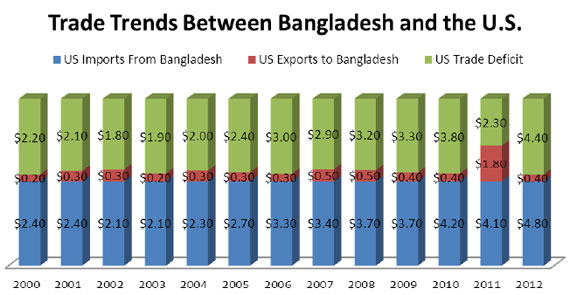
The U.S. Ambassador in Bangladesh Dan Mozena has been consistently upbeat in his remarks about Bangladesh which is emerging as an economically vibrant country where business people have been innovative and imaginative in pushing the economic growth consistently above 6% through decades. Today, 60% of Bangladesh‘s economy is connected with the global economy. It is also a good market for US products as the number of middle class people with disposable incomes is rising. Bangladesh could be an
8 U.S. Secretary of Navy Ray Mabus paid a ‗silent‘ visit to Bangladesh to ―deepen the bilateral security relationship‖ and establish a strategic presence in the Bay of Bengal
9 US Census Bureau, 2012http://www.census.gov/foreign-trade/statistics/product/enduse/ imports/c5380.html 10U.S. Census Bureau, 2010 (data for 2010 are from January to August).
integral part of the New Silk Road envisioned by the US that will connect Central Asia, Afghanistan, Pakistan, India, Nepal, Bhutan, Myanmar and China.
Two major areas can be discerned in understanding US interests and policies towards Bangladesh: one may be called strategic and economic interests on ‗hard issues‘ like security, trade and commerce, and the other political on ‗soft issues‘ that includes human rights, governance especially corruption, political violence, religious extremism, and continuing conflict on modalities of democratic transition. As a partner in development and strategic ally, the above-mentioned destabilizing factors come seriously on the ―rudder‖ of US foreign policy and security agencies and actors. The United States has been one of Bangladesh‗s largest foreign investors over the past five years. During that period, U.S. companies have invested a total of US$522 million, representing about 13% of the country‗s total stock of foreign direct investment (FDI). However, the U.S. share of FDI in Bangladesh witnesses a declining trend since 2006.11
| US FDI Flows to Bangladesh |
| Year |
Total FDI in Bangladesh |
(US$ million)17 US FDI Inflow |
%Total FDI |
| 2011 |
$800.00 |
$85.0 |
10.6% |
| 2010 |
$806.00 |
$90.0 |
11.16% |
| 2009 |
$700.20 |
$42.9 |
6.1% |
| 2008 |
$1,086.30 |
$40.9 |
3.8% |
| 2007 |
$666.40 |
$120.4 |
18.1% |
| 2006 |
$792.50 |
$175.7 |
22.2% |
| 2005 |
$ 845.30 |
$141.8 |
16.8% |
|
| Total |
$5696.70 |
$696.7 |
12.22% |
(Compiled from FDI Survey Report, Bangladesh Bank) |
U.S. investments in Bangladesh have focused mainly on the energy and power sectors (79%), the financial sector (insurance, banks, and varied services), along with some in manufacturing. By far, the largest and most important U.S. investor in Bangladesh is Chevron, which has operated three gas fields—Bibiyana, Molvibazar, and Jalalabad—in the Sylhet region for a number of years. Chevron‗s development of gas fields has increased steadily, and the company now supplies approximately 50% of Bangladesh gas12. Another US company Conoco-Philips is also in the process of being engaged in gas exploration in the Bay. But bureaucratic inefficiency, lack of effective decision-making and overall political uncertainty inhibit desirable level of U.S. investment in Bangladesh.
10 Dan W. Mozena,― Bangladesh as the hub of New Silk Road‖ Interview, Dhaka Courier, August 31, 2012; Also, ―The New Silk Road and Regional Economic Integration‖, Remarks by Robert O. Blake,Jr. Assistant Secretary of State, Bureau of South and Central Asian Affairs, Turkic American Convention, Washington, DC March 13, 2013;
11. Bangladesh Bank, FDI Survey Report, various years
12. Chevron Bangladesh, Highlights of Operation
U.S. economic/commercial relations have reached ―a critical point‖ over workers‘ rights and safety standards in factories. The USA suspended the Generalized System of Preferences (GSP) facility to Bangladesh into the US market following series of accidents especially the Rana Plaza collapse that left at least 1,150 workers dead in June this year. Another issue which is not related to GSP is the US‘s long time interest in signing a broad framework agreement for dealing with bilateral trade and investment. The United States was also urging Bangladesh governments in the past five years to conclude a Trade and Investment Cooperation Framework Agreement (TICFA) that it believed would create a sound structure for regular high-level economic dialogue and facilitate greater trade and investment opportunities. The myopic Awami League government is still vacillating and the Agreement is yet to be signed by the two parties.
Security Cooperation in the Bay
The dynamics of geo-politics drive partnerships in security and economics. No wonder, US-Bangladesh bilateral security cooperation is driven by the perceived convergence of geopolitical interests and economic benefits. The Bay of Bengal, the largest bay in the world forms the northeastern part of the Indian Ocean. It is bordered mostly by India and Sri Lanka to the west, Bangladesh to the north and Myanmar and the Andaman and Nicobar Islands to the east. The principal trade routes for large tankers en route from the Persian Gulf to the Strait of Malacca pass south of the Bay of Bengal.
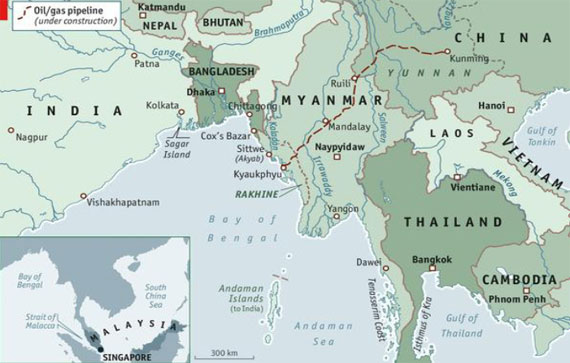
Bangladesh has a coastline of 220 nautical miles. Bangladesh shares maritime boundary with India and Myanmar in the Bay of Bengal. The maritime boundary disputes with Myanmar has been resolved by the International Tribunal for Law of the Sea
13. ENCYCLOPAEDIA BRITANNICA, Bay Of Bengal
7
(ITLOS) judgment on March 14, 2012 in which Bangladesh and Myanmar were awarded 111,631 and 171,832 square kilometers respectively. However, disputes with India remain unresolved. Bangladesh has consistently argued that India should give due consideration to the concave nature of its coast and rejected the equidistance approach. There were several rounds of talks between the two countries and attempts were also made through diplomatic channels. In 2009, Bangladesh approached the ITLOS for arbitration and the decision is expected in 2014
In 838,600 square mile area of the Bay, security threats of the littoral states including Bangladesh range from disputes over exclusive economic zones to terrorism, piracy, poaching, over-fishing, and trafficking of humans, arms, and narcotics. US security ties with Bangladesh get salience in this context. US realized that Bangladesh adjoined by the Bay in the Indian Ocean should not be totally under either the Indian sphere of influence or that of China. In fact, Washington also wants a stable Bangladesh, as any power vacuum in this ‗fragile‘14 state created by political and economic chaos resulting in upsetting the status quo is not in US interest. Therefore, US security assistance program can have tremendous impact in supporting states like Bangladesh trying to build their security capacity. No doubt, in an interconnected world, terrorists, pirates, traffickers, and other transnational actors can exploit the weakness of states to cause mayhem and instability. Andrew J. Shapiro, US Assistant Secretary of State said this in very clear terms, ―Our assistance is helping states like Bangladesh better control their borders and their coastlines…and better deal with natural disasters and transnational threats …through our training initiatives and exchanges we are helping professionalize national military forces to ensure they can better protect their public, while respecting human rights‖. 15
In fact, US maintain a positive perception of Bangladesh to become a key player in maintaining security in Bay of Bengal. As one strategic analyst points out, "While US relations with India "may not progress as quickly as desired and those with Pakistan and Afghanistan are "in tatters," the United States needs to forge deeper strategic relationship with the "marginal states, like Bangladesh, Sri Lanka and Myanmar16."Such states," according to Doug Lieb in the Harvard International Review, "are often overlooked in a structural realist world view that privileges the study of larger countries.‖17 In broader perspective, therefore, three clear interests bind Bangladesh and the United States in the Bay: First, the Indian Ocean is the central highway for international commerce particularly between the oil-rich Gulf States and an economically dynamic East Asia, and it in this context, Bangladesh shares interest with the US and other littoral states for the
14 Bangladesh is in the list of ‗fragile‘ states that ―lack the ability to develop mutually constructive relations with society and often have a weak capacity to carry out basic governance functions‖, OECD, Fragile States: 2013
15. Andrew J. Shapiro, US Assistant Secretary of Political-Military Affairs Andrew J. Shapiro who led the American delegation to Bangladesh in the first ever Security Dialogue between the two countries in Dhaka on April 19, 2012
16 Nilanthi Samaranayake, The Long Littoral Project: Bay of Bengal, CNA Analysis and Solutions, September, 2012
17 Doug Lieb, ― The Limits of Neo-realism: marginal states and International Relations Theory, Harvard International Review, July 2005
safety and security of the sea-route. In fact Bangladesh‘s 90 percent goods pass through this route from its two ports: Chittagong and Mongla; Second, Bangladesh‘s urgency to have access, explore and harness hydro-carbon resources and marine fisheries within its rightful zone for national development; and Third, (iii) China-India strategic competition that has significant implications for Bangladesh‘s security and continued development
Connectivity, energy and economic Activity
While US interest to maintain the Indian Ocean as a secure highway for international commerce remains paramount in her global strategy, the harbors on the eastern zone of the Ocean are fast transforming the economic geography of Asia. This has recently been pointed out by the Economist Magazine18 in a feature that highlighted how India was building a large new terminal beside the old harbor in Sittwe (Akyab) as a joint project between India and Myanmar. Taking advantage of the port‘s site at the mouth of the river Kaladan, which empties into the Bay of Bengal, India hopes to open its own landlocked and impoverished north-eastern states. But that is only one of many ambitious ventures
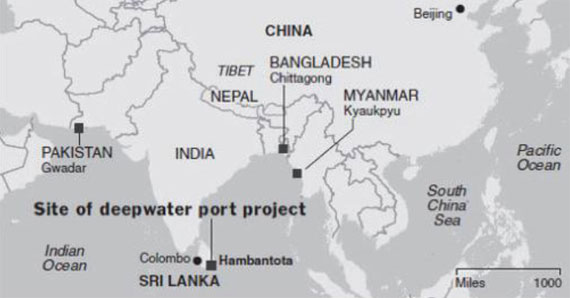
underway along the eastern half of the Bay of Bengal. In fact, booming Asian economies have long since outgrown their ports. Sprawling Kolkata, for instance, the oldest colonial port on the Bay of Bengal, has been unable to take in bigger modern vessels for years. It lies 144 miles inland up the river Hooghly, which has gradually silted up. Local and national governments have approved the construction of a new deepwater port on Sagar island at the mouth of the Hooghly at a cost of 80 billion rupees ($1.5 billion).19 Bangladesh‘s Chittagong, the biggest port on this side of the bay, faced with huge
18. The Bay of Bengal: New bay dawning, , The ECONOMIST, April 27, 2013
19 The Economist, New Bay Dawning
bottlenecks, started its modernization process with hopes of further growth on the site of a vast new deepwater container terminal to its south.
Myanmar‘s opening, however, overshadows the rest. Its new government, keen for foreign inflows to help rebuild the economy, has been approving projects that sat idle for years. Sittwe is one, but it looks small compared with the Dawei project on Myanmar‘s Tenasserim coast. This is a Thai-aided deepwater port that includes an industrial zone and highways to connect it with distant Bangkok, estimated to cost $8.5 billion. The Chinese are exploring ways round their own Malacca-strait dilemma. They have been building new oil and gas pipelines across the whole of Myanmar starting from a new port-terminal at Kyaukphyu, near Sittwe. The lines run through Mandalay to Ruili on the border and beyond to Kunming, the capital of Yunnan province. In commercial terms, the trans-shipment terminals of Malaysia and Singapore could lose out. But Sukh Deo Muni of Singapore‘s Institute of South Asian Studies, reckons they ―would not necessarily suffer, as the new connectivity will generate more economic activity‖. 20
China-India Rivalry
As for the strategic rivalry between China and India, there are divergent opinions. S.D. Muni argues that China‘s activities in the Bay of Bengal are purely ―defensive‖. But Indians versed in the ―string of pearls‖ theory, which sees Chinese-built ports encircling India, are not be much comforted. They argue that China‘s economic and security interests have resulted in a greater Chinese presence in the Indian Ocean region, much to the concern of India. China has cultivated economic relationships with littoral countries of the Bay through infrastructure projects such as port development, power plant construction, and railway and road building. Indian strategic planners worry that Chinese influence in these Indian Ocean outposts could turn them into military bases that would enable China to ―encircle‖ India. However, a single-minded focus on these sites as likely nodes of Chinese influence does not capture the entire story, because the rationale behind these developments is more economic than strategic. Beijing is trying to connect its western provinces to the global economy by constructing lines of communication south to the Bay of Bengal. That said, there are strategic concerns at work as well. 21
India is undertaking a major modernization of its navy with increasing bilateral and multilateral naval ties in the Bay of Bengal. Partly in response to China and partly as a power rising on the world stage, India has begun upgrading its tri-service Andaman and Nicobar (A&N) Command, allocating greater resources to the Eastern Naval Command (located along India‘s Bay of Bengal coast), and increasing navy-to-navy ties through forums such as the Indian Ocean Naval Symposium and the MILAN exercise.22 The strongest manifestation of Sino-Indian rivalry in the Bay of Bengal has been in Myanmar.
20 S.D. Muni, India and the Security of Asia, ISAS, National University of Singapore, 2012
21 Michael J. Green and Andrew Shearer, Defining U.S. Indian Ocean Strategy, The Washington Quarterly, Spring 2012
22 David Brewster, ‗An Indian Sphere of Influence in the Indian Ocean?‘ Security Challenges 6, No. 3 (Spring2010);Indian Ocean Naval Symposium, http://indiannavy.nic.in/ions/welcome_to_ions_website_new.htm
This is due to the confluence of both countries‘ domestic and strategic interests in a neighbor that both Beijing and New Delhi want as a friend: a political friend as well as a neighbor that can provide them with access to the Bay of Bengal (from Yunnan province in China and from India‘s northeastern states). While strategic concerns still animate both China and India, both countries are actually pursuing the same objective—access through Myanmar so that their landlocked underdeveloped areas can develop economically. Finally, China has already established several footholds in the Indian Ocean region (the so-called ―string of pearls‖ strategy) which India cannot roll back. While Chinese involvement in ports such as Sittwe in Myanmar and Hambantota in Sri Lanka do not seem to have for primary purpose an encirclement of India but rather ensuring China has the ability to secure its own energy supply lines, India feels evident discomfort with China‘s growing footprint so close to its shores, in its ―backyard‖. 23
U.S. cooperating with Bangladesh Navy
The Bay is the life line for Bangladesh. It is important both for security as well commerce. As the naval arm of Bangladesh Armed Forces, Bangladesh Navy is entrusted to safeguard ―the sovereignty over the internal waters & territorial sea, and sovereign rights over the Contiguous Zone, Exclusive Economic Zone (EEZ) and Continental Shelf of Bangladesh‖ While in reality, Bangladesh navy‘s role is mainly coastal patrolling, it is implementing an ambitious procurement and expansion program to ensure the security of Bangladesh's maritime boundary which includes the country's vast exclusive economic zone, deep sea oil, gas and mineral reserves, and vital shipping lanes in the Bay of Bengal. The Bangladesh Navy is undergoing major transformation since last decade. The government has approved a 10-year perspective plan and as part of this the navy is upgrading the existing fleet with capability to undertake emerging roles and maintain interoperability with friendly navies.24
Defending Sea Routes
The current force structure of the Bangladesh Navy comprises a variety of frigates and corvettes, fast attack boats and patrol vessels, and logistic support vessels. It recently acquired two Castle-class offshore patrol vessels and a survey ship from the United Kingdom. Bangladesh has also contracted two 053H2 frigates at a cost of Tk 6.44 billion from China.25 The US has recently provided a Coast Guard cutter ship and 16 high speed boats to augment Bangladesh Navy and Coast Guard capability to protect the EEZ. The ‗Jarvis‘ was the fourth in its class of High Endurance Cutters which is designed to provide better sea-keeping and higher sustained transit speeds, greater endurance and range, and the ability to launch and recover small boats, as well as support aviation facilities with a flight deck for helicopters and unmanned aerial vehicles. Since first receiving Foreign Military Financing or FMF in 2005, Bangladesh has focused on building patrol boat fleets for the Coast Guard—a project that supports maritime security
23 Howard Chua-Eoan, ‗‗Beyond Pirates: On the High Seas, an Indian-China Rivalry,‘‘ Time, April 8, 2009,
24. Interview with Bangladesh Navy Chief, 2012
25 Bangladesh Navy Official Websites; and ― Navy eyes sub, new frigates, The Daily Star, June 24, 2009
11
and disaster relief and strengthens the government‘s presence in isolated areas. Bangladesh has been working through a military modernization plan, which includes looking to partners for affordable defense systems, especially to supply its Special Operations Forces and disaster relief equipment. ―This modernization effort provides an opportunity for U.S. to expand its security cooperation, especially through ―Excess Defense Articles Program‖,26 which makes US equipment that is surplus to their requirements available to partners.
Working with US Pacific Command
US Pacific Fleet protects and defends the collective maritime interests of the United States and its allies as well as partners in the Asia-Pacific region. With allies and partners such as Bangladesh, US Pacific Fleet enhances stability, promotes maritime security and freedom of the seas, deters aggression and when necessary, fights. ―I hope my presence here helps to reinforce to you the value that I place to our relationship, the importance of this vital region and our commitment to continuing to work with Bangladesh navy for maintaining security to support peace and prosperity,‖ said US Fleet Commander. In fact, U.S. has realized that South Asia is critical for the movement of goods and services in the world economy. ―My hope is that my Pacific Fleet in Bangladesh through exercising, training and education exchange will improve the ability to conduct operations together, share information and develop relationships to address shared security concerns.‖ ―Together we can build strong military security frameworks that benefit security and economy of all,‖ he affirmed.27 US Ambassador Dan Mozena played a key role in this context when he clearly brought out the need for protection of Bangladesh sea-lines as the country becomes the second largest exporter of household textiles, and possessing energy resources falling under its maritime boundaries. US 7th Fleet commander Scott H Swift in his visit to Bangladesh in 2012 remarked: ―We‘re more interested to assist Bangladesh Army and Navy to enhance their ability to protect its maritime resources from pirates, protect country from terrorist attack and co-operate during natural disasters‖.28
Support to Disaster and Relief operations
The Bangladesh Navy is a professional force and has provided invaluable support to the country at the time of natural disasters like floods and cyclones. It has been estimated that nearly 53 percent of the recorded world deaths due to cyclones occurred in Bangladesh. Bu the Navy's capability to respond to such disasters was limited. U.S. support in this respect was very helpful to expanding its ability to respond to disasters. In 2007, the US Navy deployed two warships, 20 helicopters, 3,500 marines, Army medical teams, and US Air Force C-130 aircraft for emergency relief support, medical and emergency
26. Defense articles and military equipment that are no longer needed by the U.S. armed forces are eligible for transfer to foreign countries under section 516 of the Foreign Assistance Act (FAA) of 1961
27 The Pacific Fleet Commander of United States Admiral Cecil D Haney on his visit to Bangladesh, January 15, 2013 said the US Navy is ―eying partnership, not treaties with its Bangladesh‖ as part of its rebalancing strategy in the Asia Pacific region.
28 . U.S. 7th Fleet Commander Scott H. Swift in his three-day visit to Bangladesh on April 7, 2013
12
evacuation.29 The non-traditional security challenge of natural disasters and climate change in the Bay of Bengal is important for Bangladesh to address effectively as the entire Bay region is particularly vulnerable to sudden changes in the weather – including cyclones, flash floods, and landslides – as well as to long-term shifts in climate, leading to rising sea levels and Tsunami.
He added building of 130 cyclone shelters were going and 30 of them would be coastal crisis management centers. Two of those centers would be opened in March.―The centers would be prominently manned by Bangladesh Coast Guard. There will be facilities for land transportation, boat transportation and cyclone-proof communication capabilities.‖30 Mozena further said the commander came to Bangladesh as ‗part of our outreach campaign to further bolster and support the military-to-military engagement between the US and Bangladesh‘. Admiral Haney said they were working with Bangladesh solely on ‗partnership built upon years of working together.‖31
Improving Coast Guard
Piracy and armed robbery in Bangladesh occur in the port area and mariners remain concerned about the security situation. This has forced global insurance companies to increase risk premiums for ships calling at ports in Bangladesh particularly at the port of Chittagong. It is important to note that Chittagong port is the most important maritime hub of Bangladesh and handles nearly 90 percent of its trade. At another level, the Bangladeshi fishermen have been victims of pirates who kidnap them for ransom. For instance, in August 2012, Bangladesh launched a joint air and naval operation against pirates in the Bay of Bengal in an effort to rescue 50 fishermen who had been kidnapped close to the Sundarbans, the world's largest mangrove forest where pirates have sanctuaries in the dense forest. According to the Bangladesh Navy, four ships, two helicopters from the Air Force and high-speed boats took part in the operations in the Sundarbans and its surrounding area.
Citing successes of Bangladesh and US maritime partnership, Mozena said the Coast Guard improved their capabilities to respond to robbery, which was why the incidence of robbery has declined 70 percent on Chittagong coast. The military to military partnership is especially strong and productive. ―Working together, America and Bangladesh have strengthened Bangladesh‘s ability to secure its maritime borders from piracy, terrorism, trafficking of people, drugs, and arms ... Bangladesh can now better protect its fish and other resources in the Bay of Bengal.32 This partnership has helped Bangladesh create a Navy Seals like capacity, called SWADS that is most impressive. Thanks to the enhance capabilities of the Bangladesh Coast Guard and Navy, robberies of ships at anchorage in Chittagong have fallen by nearly 75% and insurance rates have
29 US PACOM press release http:wwwpacom.mil/news/news/2007-bangladesh-pr009p.shtml
30 Dan Mozena‘s Remarks during his visit on January 15, 2003
31 Dan Mozena‘s Remarks
32 SWADS a Special Warfare Diving & Salvage Force of Bangladesh Navy capable of undertaking missions for anti-piracy, counterterrorism and other criminal activities in the sea organized along the lines of US Seals.
dropped, too. Our engagement with the Bangladesh Navy and Coast Guard has included the transfer of dozens of high speed, high performance boats.33 Illegal migration is rampant in Bangladesh waters due to a number of factors including the exodus of the 'stateless Rohingya' from Myanmar and the prevailing social-economic conditions in Bangladesh. The illegal migration is carried out by gangs and cartels who have established networks across the country. In October 2012, the Bangladesh Navy, Bangladesh Coast Guard and Border Guard of Bangladesh had prevented 3200 Rohingya people, who were trying to cross the border.34
Conclusion: Looking Forward
Unmistakably, America is our friend and vital to our prosperity and security in the future. Bangladesh today is connected to outside world as never before. Ninety percent of the country‘s economy is linked globally, and our people spread across the world. At a time when the Asia–Pacific region is building a new security and economic architecture, Bangladesh foreign policy must adapt to new realities and build web of partnerships and engagements with nations that matter. But a nation can only globalize from its position of strength – the strength of its democratic institutions, quality of leadership, and creative potential of the people.35 As Bangladesh moves forward, it therefore, needs to focus on the steps to be taken at home– improve democratic credential, overcome partisan divisions, ensure safety in work places, and strengthen governance. The nation‘s most potent asset is the human power that needs to be infused with character and skills on which will depend the success of our external engagements. It is in this context, Bangladesh has much to gain from her partnership with the United States.
Bangladesh and the United States have been friends since 1972. Today, the stakes are greater as they become new partners in a very critical time of change. A durable and robust US-Bangladesh relationship can only emerge from a clear understanding of economic, political and mutual security needs and interests. Bangladesh today stands at an important crossroads in its history. The United States must not only provide security assistance to Bangladesh to defend its borders and coastlines, she also has to support the country to fight corruption, help develop fair and open election processes for democratic transition, as well as deter the spread of religious or ethnic extremism by an inclusive process. In fact, the strategic engagement of the United States in Bangladesh must aim to enhance cooperation for stability, peace and development - not acting alone but in concert with other major powers reinforced by strategic trust, and reflected in concrete and constructive policies and actions.
33 Dan Mozena‘s Statement
34 Vijay Sakhuja, ―Bangladesh Navy: Building Multidimensional Capabilities‖ South Asia Defense and Strategic Review, February-March Issue, 2013
35 Susan J. Tolchin, The Angry American – How Voter Rage is Changing the Nation (1996, 2nd ed. 1998),
References
Andrew J. Shapiro, US Assistant Secretary of Political-Military Affairs Andrew J. Shapiro who led the American delegation to Bangladesh in the first ever Security Dialogue between the two countries in Dhaka on April 19, 2012
Bangladesh Bank, FDI Survey Report, various years Bangladesh Navy Official Websites; and ― Navy eyes sub, new frigates, The Daily Star,
June 24, 2009
Chevron Bangladesh, Highlights of Operation
Christopher Nichols, The Limits of American Power, American Military and Diplomatic History Conference, May 7, 2013
Dan Mozena‘s Remarks during his visit on January 15, 2003
Dan W. Mozena,― Bangladesh as the hub of New Silk Road‖ Interview, Dhaka Courier, August 31, 2012; Also, ―The New Silk Road and Regional Economic Integration‖, Remarks by Robert O. Blake,Jr. Assistant Secretary of State, Bureau of South and Central Asian Affairs, Turkic American Convention, Washington,
DC March 13, 2013;
David Brewster, ‗An Indian Sphere of Influence in the Indian Ocean?‘ Security Challenges 6, No. 3 (Spring2010); Indian Ocean Naval Symposium,
Doug Lieb, ―The Limits of Neo-realism: marginal states and International Relations Theory, Harvard International Review, July 2005
ENCYCLOPEDIA OF BRITANNICA, Bay of Bengal
FOREIGN POLICY, Oct.11, 2011, The ‗rebalance strategy‘ widely known as ―the pivot to Asia‖ aims at redeployment of U.S. military assets by expanding partnership and cooperation with countries of the Asia-Pacific region, including bases. For official position, Hillary Clinton, America‘s Pacific Century.
Howard Chua-Eoan, ‗‗Beyond Pirates: On the High Seas, an Indian-China Rivalry,‘‘ Time, April 8, 2009,
Joseph S. Nye, The Paradox of American Power: Why the World‘s Only Superpower Can‘t Go It Alone (Oxford University Press, 2002)
Michael J. Green and Andrew Shearer, Defining U.S. Indian Ocean Strategy, The Washington Quarterly, Spring 2012Nilanthi Samaranayake, The Long Littoral Project: Bay of Bengal, CNA Analysis and Solutions, September, 2012
Pew Global Database/ Indicators (various years on selected countries) S.D. Muni, India and the Security of Asia, ISAS, National University of Singapore, 2012 Susan J. Tolchin, The Angry American – How Voter Rage is Changing the Nation (1996, 2nd ed. 1998),
The ECONOMIST, The Bay of Bengal: New bay dawning, April 27, 2013 U.S –Bangladesh Partnership Dialogue, Media Note, office of the Spoke person, Washington DC, May 5, 2012
Vijay Sakhuja, ―Bangladesh Navy: Building Multidimensional Capabilities‖ South Asia Defense and Strategic Review, February-March Issue, 2013
Wendy R. Sherman, U.S. Under Secretary for Political Affairs Wendy R Sherman, ―A PARTNERSHIP WITHOUT BOUNDARIES: U.S.-BANGLADESH RELATIONS‖, Hotel Ruposhi Bangla, Dhaka, May 27, 2013

